Floating vanities have exploded in popularity because they deliver a clean modern line, claim zero floor space, and make everyday cleaning noticeably quicker. Recent 2025 trend reports highlight them as a top upgrade for bathrooms of every size, thanks to customizable heights, endless finish options, and clever storage add-ons that rival full cabinetry. Below are twenty fresh, practical ideas—each packing its own visual punch and day-to-day benefit—to inspire your next remodel or new-build bath.
1. Minimalist White Floating Vanity Widens Tight Spaces
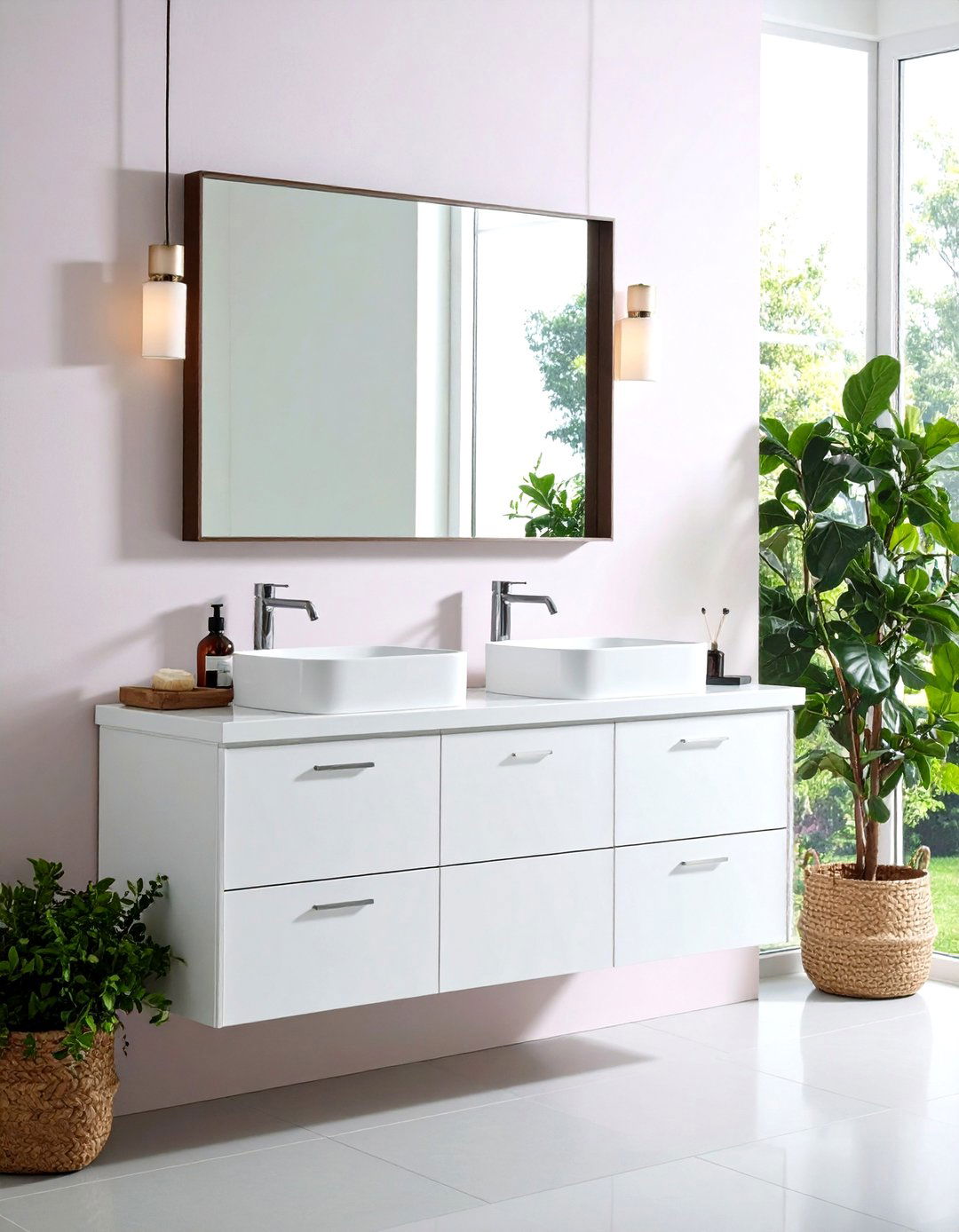
A crisp white floating vanity instantly stretches a compact room by letting floor tile run under the cabinet and reflecting more ambient light. Designers note that the wall-mount visually “lifts” the casework, so even a 24-inch unit can feel generous when paired with a slim countertop and frameless mirror. Because the unit hangs off the floor, a robot vacuum can glide below, and radiant-heat systems keep toes warm without cabinetry blocking airflow. To keep the look seamless, choose push-latch doors, concealed brackets, and a matte-finish quartz top that resists water marks.
2. Warm Natural-Wood Floating Vanity Adds Organic Calm
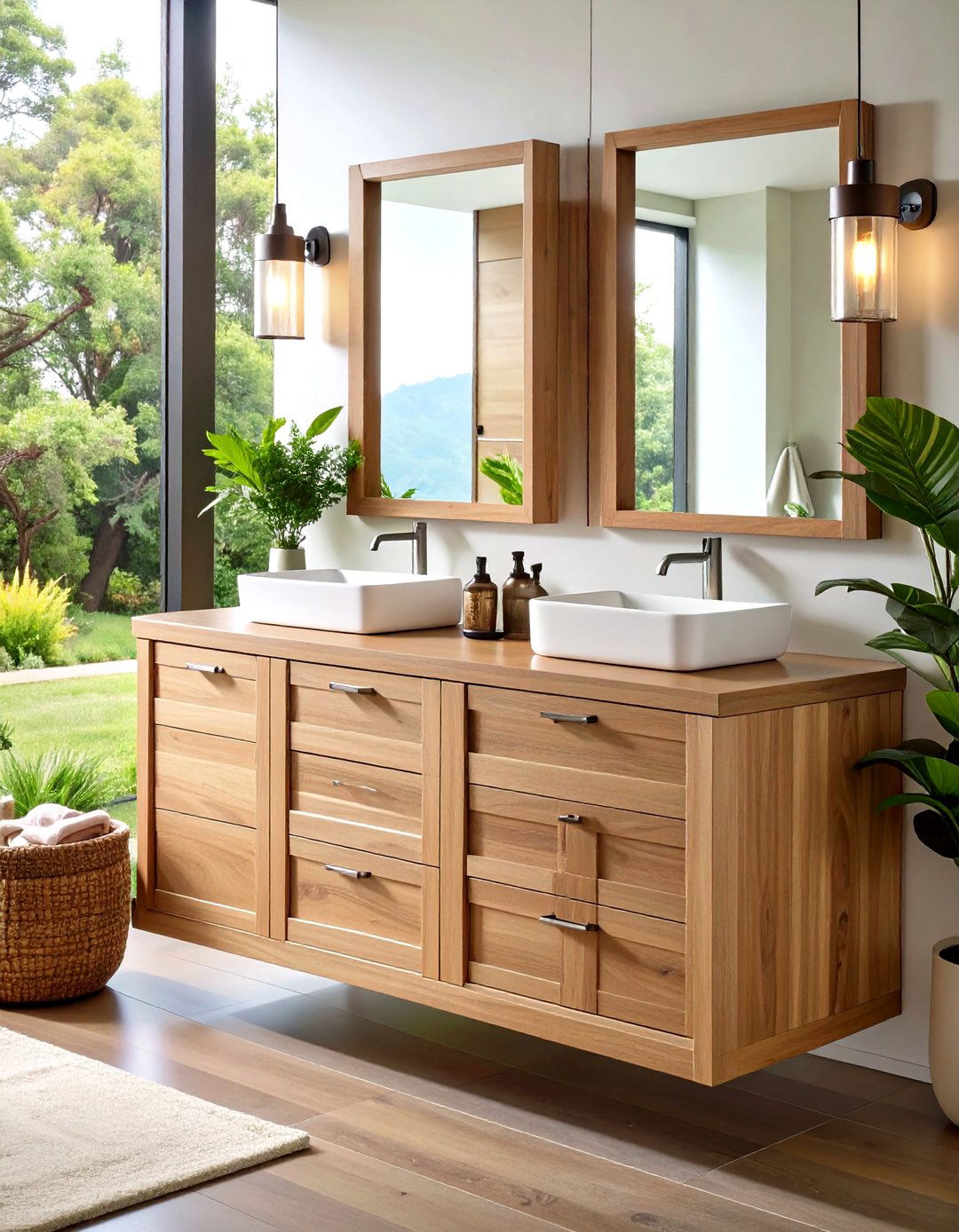
A floating vanity clad in unstained walnut or pale oak balances hard bathroom surfaces with earthy warmth. Wood tones soften the acoustics, and grain variation disguises the stray water spot between wipe-downs. Sealed hardwood fronts withstand daily humidity when finished with marine-grade varnish, while the space beneath the cabinet stays drier than a full-height base, protecting boards from prolonged moisture. Pair the timber with streamlined pulls or routed finger grooves to keep the emphasis on the material, and echo the tree tones in a matching bath-mat or stool.
3. Double-Sink Floating Vanity Streamlines Busy Mornings
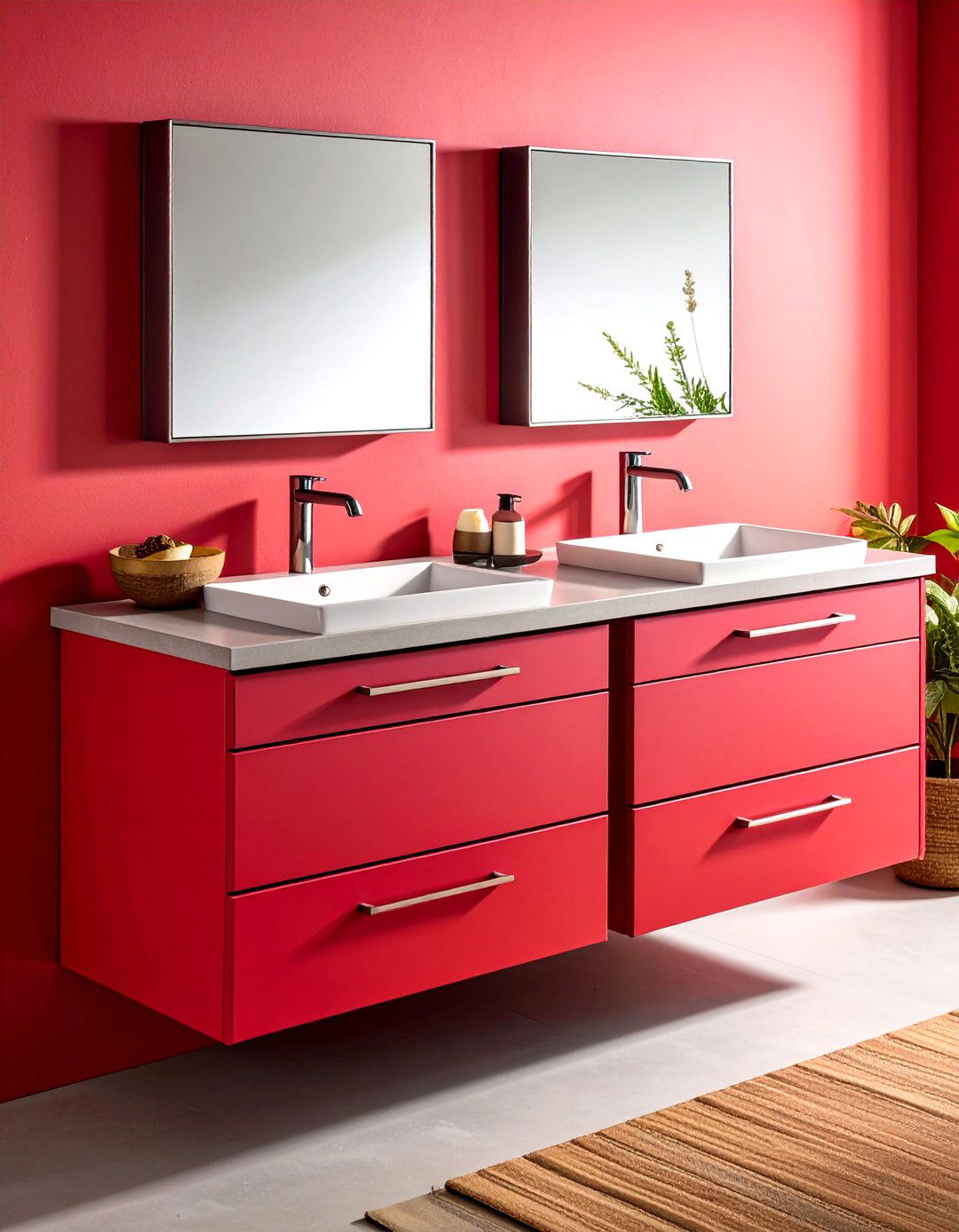
Installing a wall-to-wall double-sink floating vanity grants two users elbow room without compromising floor circulation. By mounting the entire countertop on hidden steel brackets, you maintain a continuous sight-line below, making even a standard 60-inch span feel lighter. Soft-close drawers under each basin corral personal items, so cosmetics and shaving kits have dedicated homes. For plumbing ease, place the drain outlets inside centered false backs; removable access panels simplify future maintenance without disturbing the finished wall.
4. LED-Lit Floating Vanity Sets a Subtle Glow
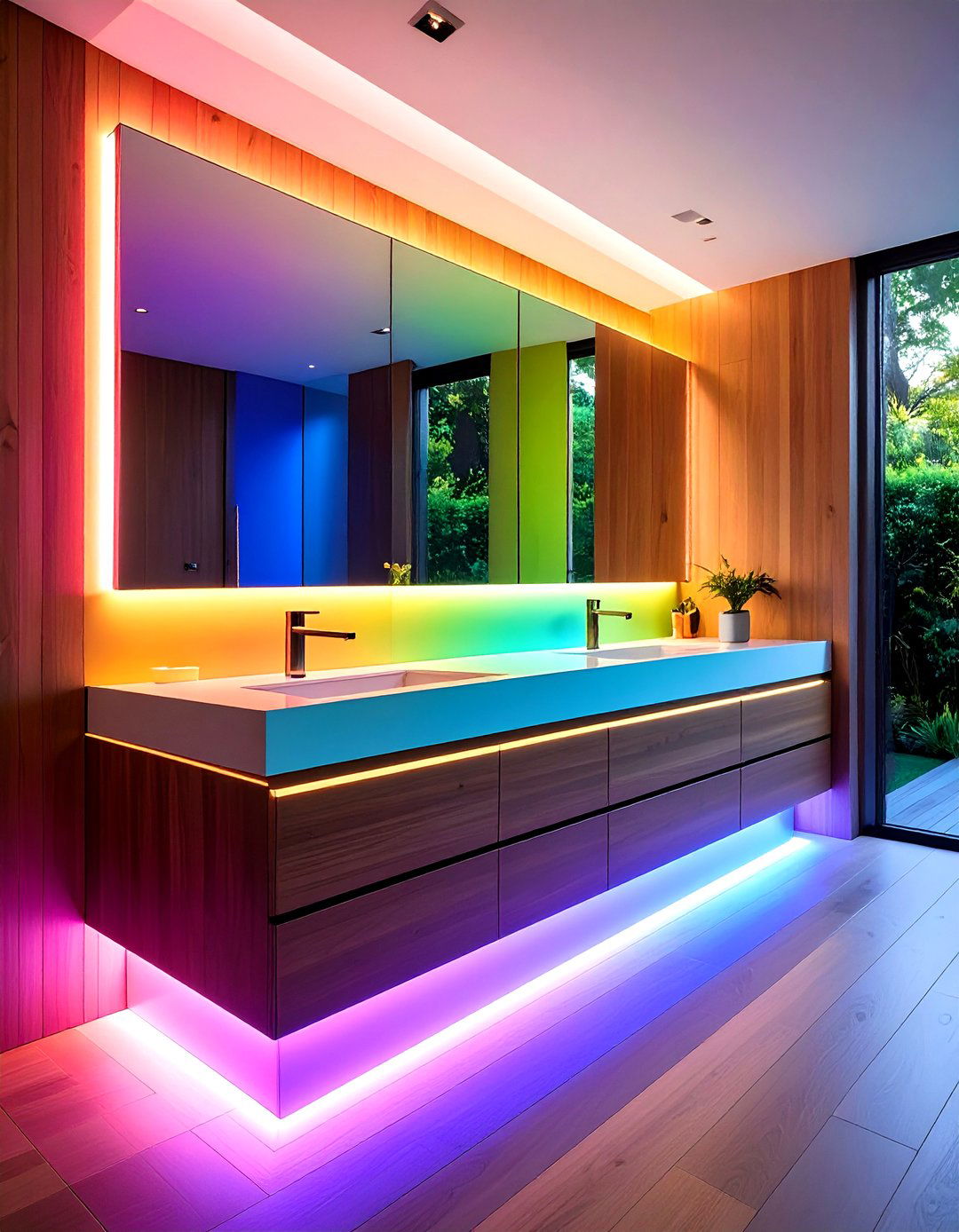
Integrating low-profile LED strips beneath a floating vanity creates an elegant night-light and gallery-style accent. Motion-activated sensors let the illumination switch on automatically, guiding sleepy footsteps while saving energy. Because LEDs run cool and sit away from splash zones, installation is straightforward: stick the tape to the underside, protect connections with waterproof heat-shrink tubing, and run the driver inside the vanity’s service cavity. Choose 2700–3000 K color temperature for a spa-warm ambiance that flatters skin tones at dawn.
5. Wall-to-Wall Floating Vanity Gives Boutique-Hotel Luxury
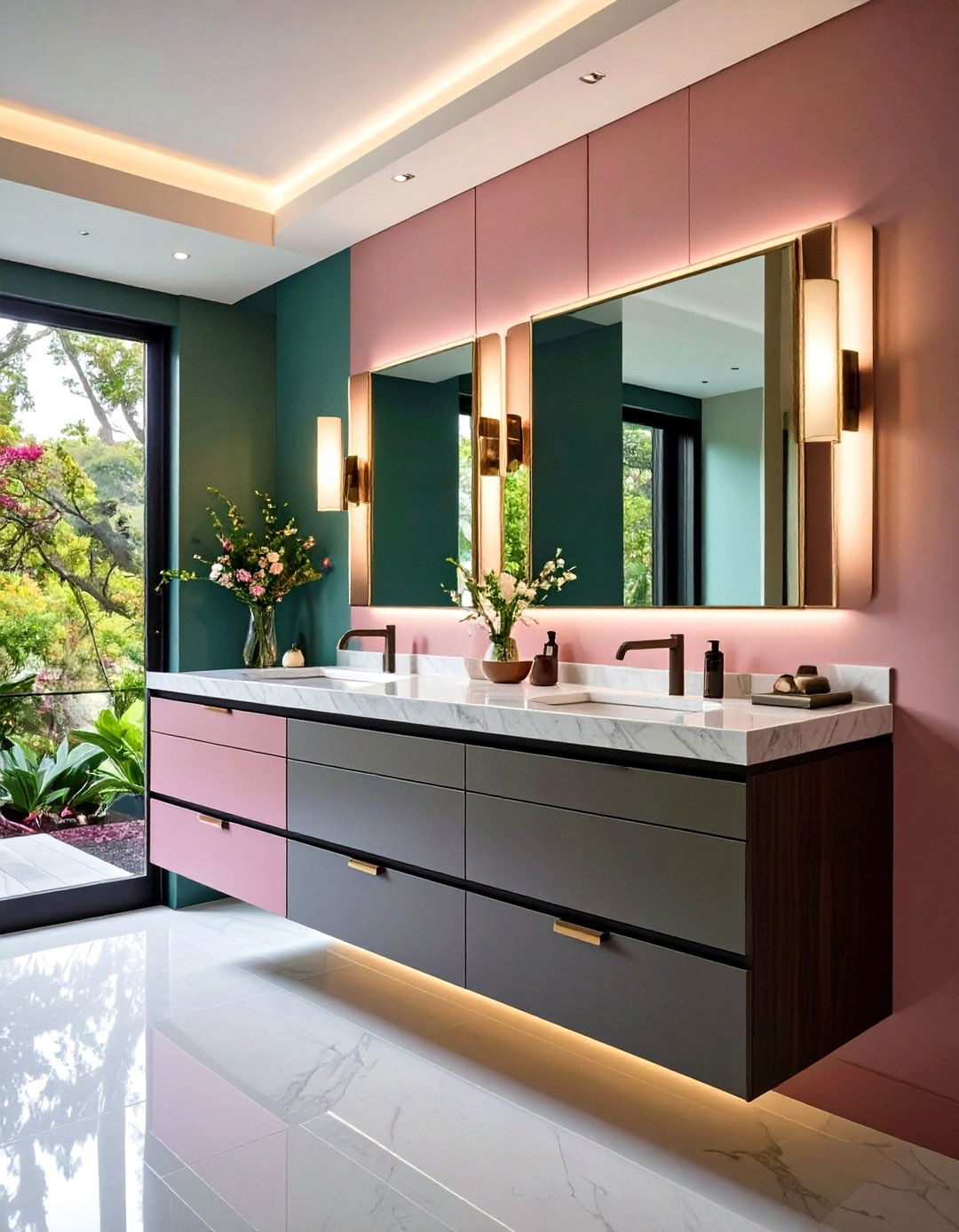
Spanning an entire wall with a floating vanity turns the sink area into a bespoke furniture piece. Fabricators cut a single slab of quartz or porcelain for the top, routing integrated basins or trough drains for seamless maintenance. Deep drawers ride on heavy-duty slides so linens and back-up toiletries hide in pull-out organizers, and the long underside void is perfect for an accent LED wash. Mirrors or fluted panels mounted above echo the vanity’s full width, delivering that high-end hotel vibe without extra square footage.
6. Corner Floating Vanity Makes Every Inch Count
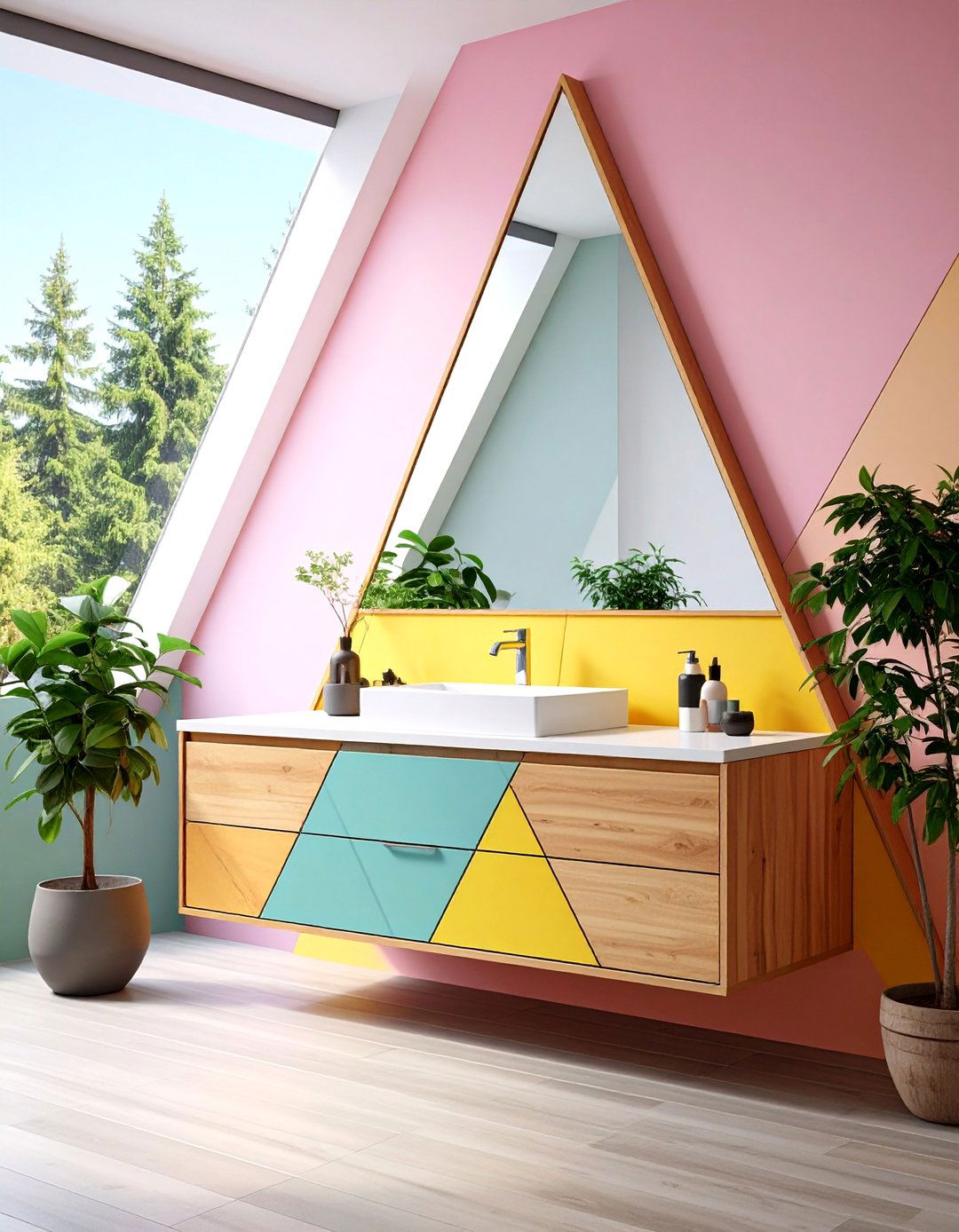
In a petite powder room, a triangular or trapezoidal floating vanity tucks into an unused corner, freeing the main wall for towel bars or art. Because the unit mounts diagonally, users still enjoy comfortable knee clearance, and the angled top adds sculptural interest. Install a compact faucet centered on the acute angle, and rely on a swiveling mirror to keep sight-lines open. Underneath, a corner basket or petite plant softens hard angles while emphasizing the new-found sense of openness.
7. Floating Vanity with Open Shelf Keeps Essentials Visible

Replacing the bottom drawer with an open oak or metal shelf gives towels, baskets, or curated décor a tidy landing zone while preserving the floating illusion. Designers recommend stacking rolled guest towels here; the color bands add effortless texture, and guests aren’t rifling through drawers. Make the shelf at least 10 inches high so bulky items fit, and finish the panel edges with a durable lacquer to resist scuffs from cleaning tools that occasionally reach underneath.
8. Marble-Topped Floating Vanity Elevates Everyday Elegance
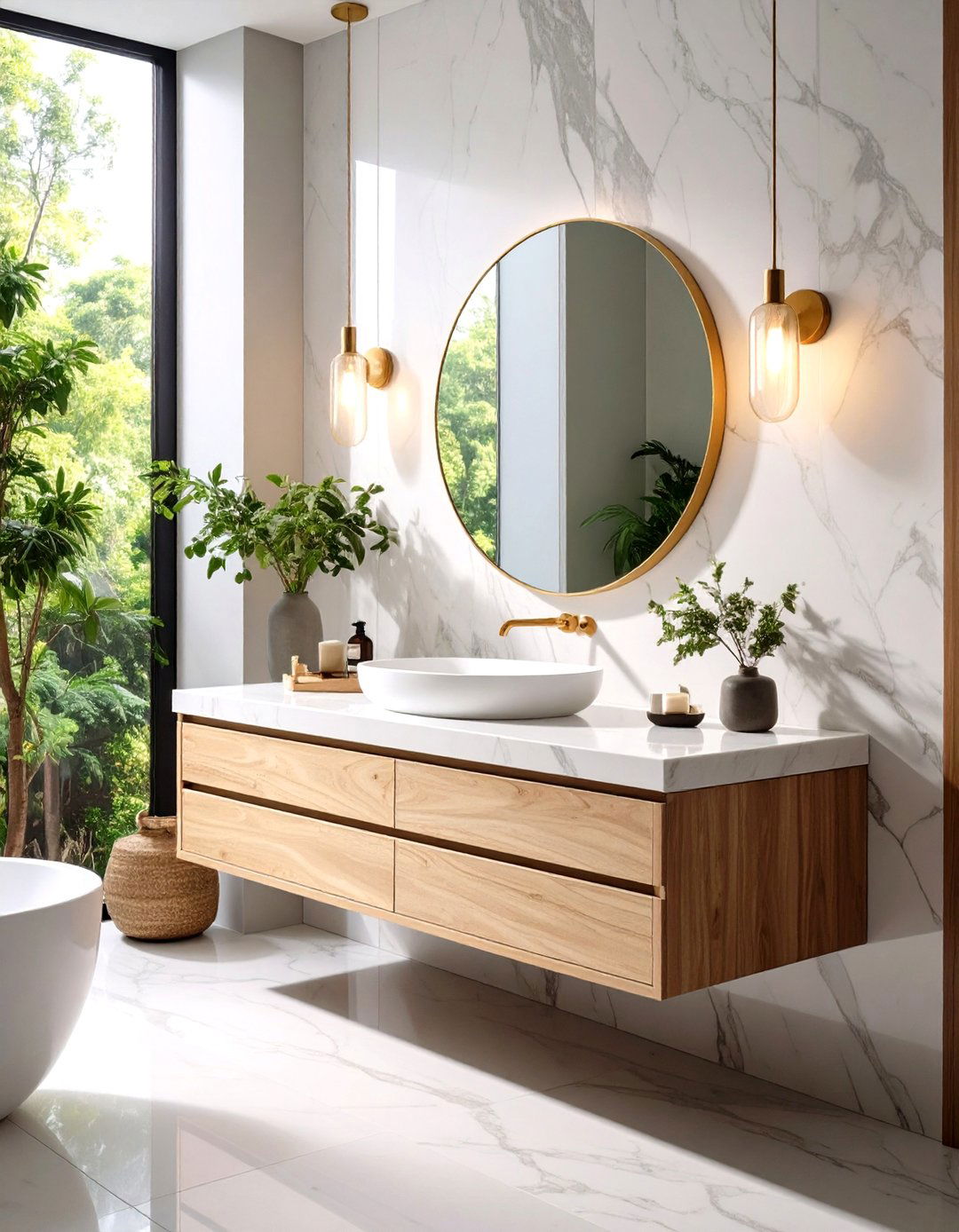
Nothing screams luxury like a thin-profile marble top cantilevered over a wall-hung cabinet. Modern fabricators reinforce the stone with fiberglass backing, allowing a graceful ¾-inch reveal that keeps the slab visually crisp without compromising strength. To prevent etching, select a honed finish and seal annually; the low sheen hides any inevitable water spots, yet veins still read beautifully. Match the stone with a caulk-free integrated backsplash and slim front apron to celebrate the horizontal plane.
9. Dramatic Black Floating Vanity Anchors Light Schemes
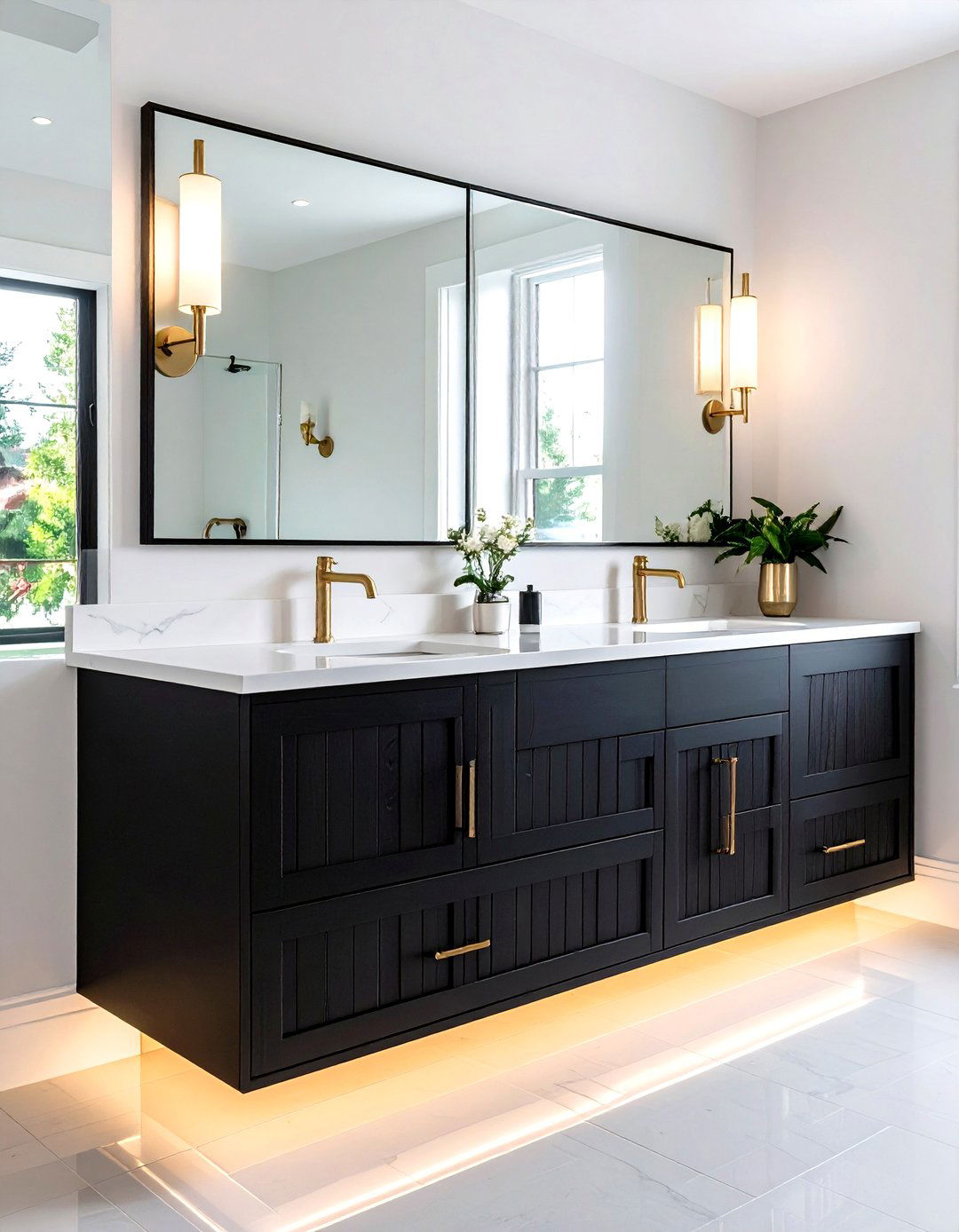
A jet-black floating vanity grounds an otherwise airy palette, creating instant sophistication. Dark paint or laminate masks hair-dye mishaps and artfully contrasts pale tile or terrazzo floors. Because the cabinet floats, the bold hue never feels bulky; the surrounding light bounces off the floor and wall, outlining the piece like sculpture. Add slim brass bar pulls or fluted glass fronts for a high-contrast pop, and balance the darkness with warm LED toe-kick lighting for depth.
10. Undermount-Sink Floating Vanity Simplifies Cleanup
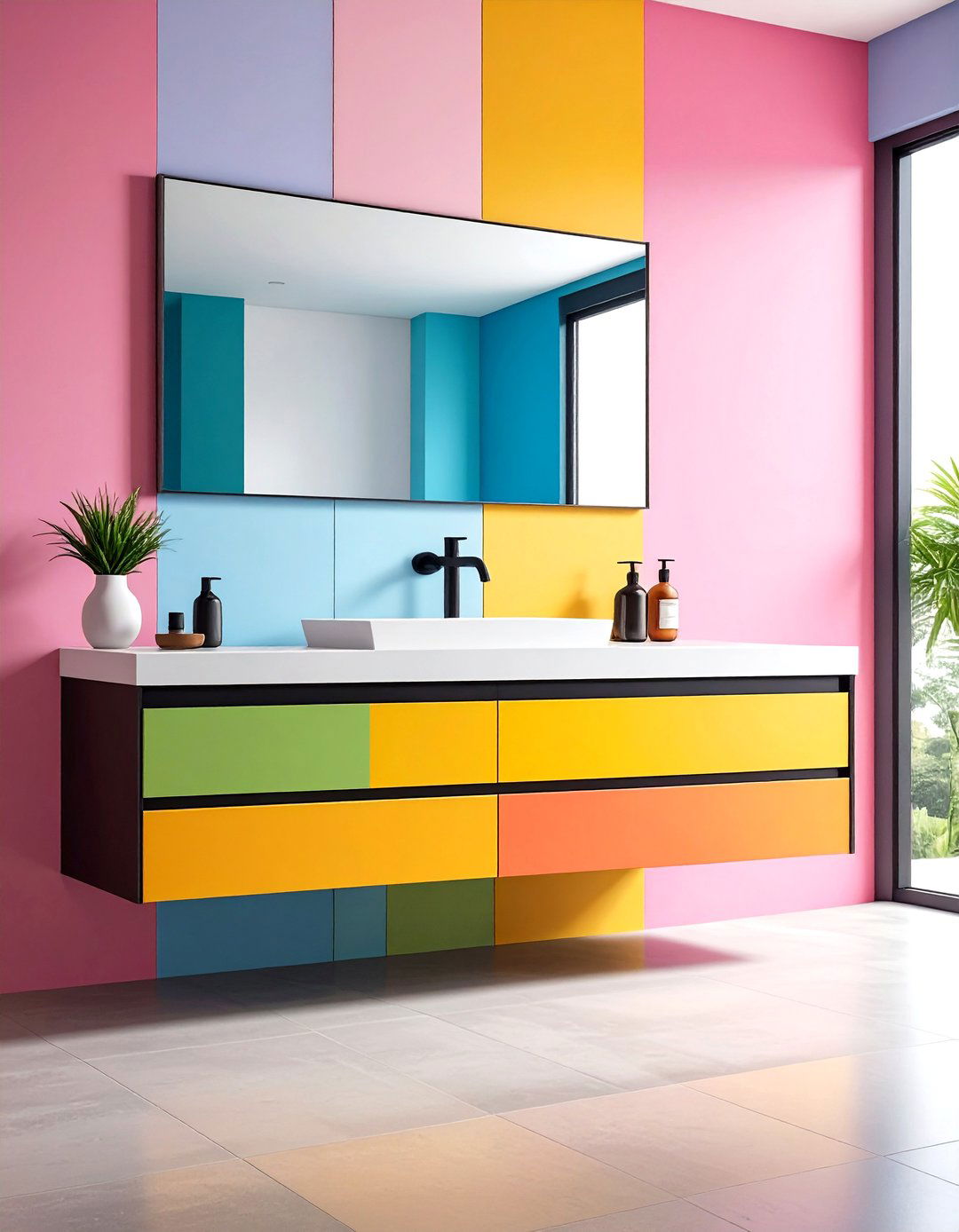
Choosing an undermount sink keeps crumb-catching edges off the counter and speeds wipe-downs—a key perk when the vanity floats and you can see stray droplets from every angle. Installers appreciate that the sink’s weight transfers to the wall brackets, not the thin countertop lip, boosting longevity. Specify an offset overflow so water can’t puddle against the backsplash, and hold the sink ½-inch below the top to retain a sleek horizontal silhouette whether you pick porcelain or composite materials.
11. Vessel-Sink Floating Vanity Becomes a Sculptural Focal Point
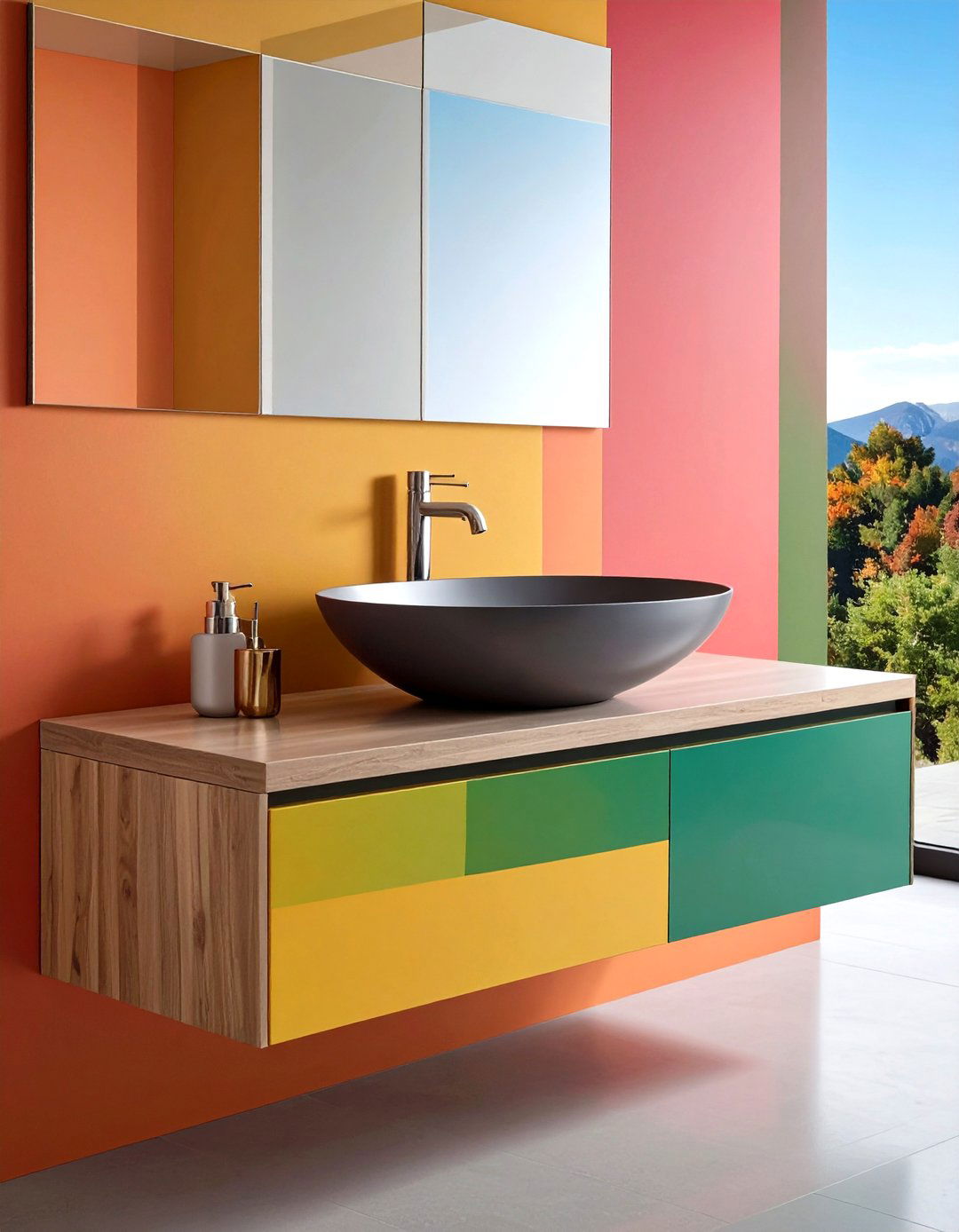
Perching a vessel basin atop a narrow floating vanity lets the countertop stay razor-thin while highlighting the bowl as functional art. Elevating the basin also means you can lower the cabinet body by two inches to create more visible air and accommodate family members of varying heights. Install a wall-mount faucet to save counter real estate, and run the supply lines inside the stud bay to keep the apron clutter-free. A mirrored medicine cabinet recessed above maintains weightless vibes.
12. Rustic Reclaimed-Wood Floating Vanity Tells a Story
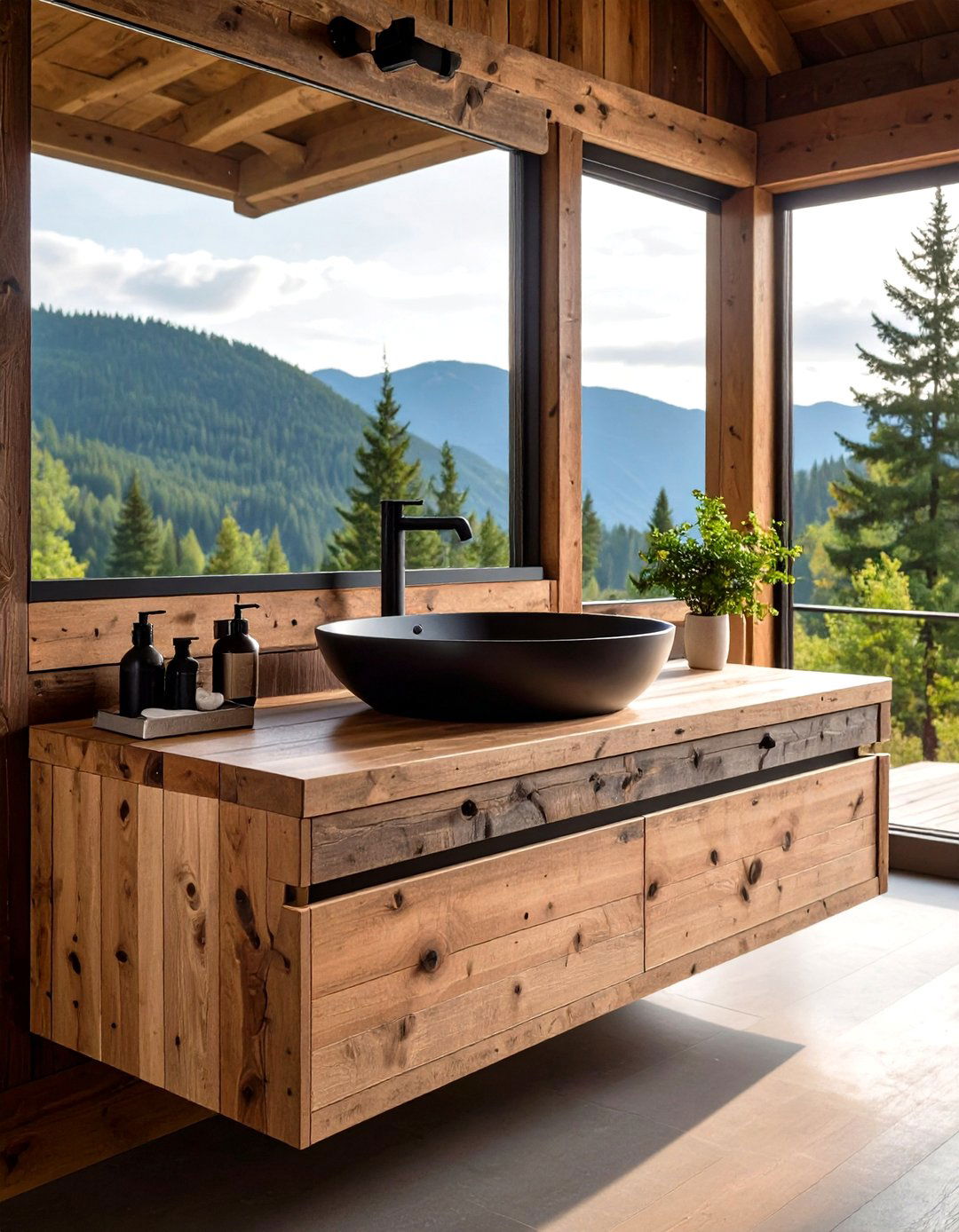
Repurposed barn boards bring authenticity to a modern bath when fashioned into a floating vanity. Tight grain patterns and original nail holes stand out against contemporary tile, creating a cozy tactile contrast. Because reclaimed lumber can be uneven, carpenters plane only the unseen backs, preserving weathered faces. Pair with a matte-black stone sink to echo historic ironwork, and seal all wood surfaces with a clear, water-based polyurethane that won’t yellow over time.
13. Drawer-Organized Floating Vanity Ends Counter Clutter
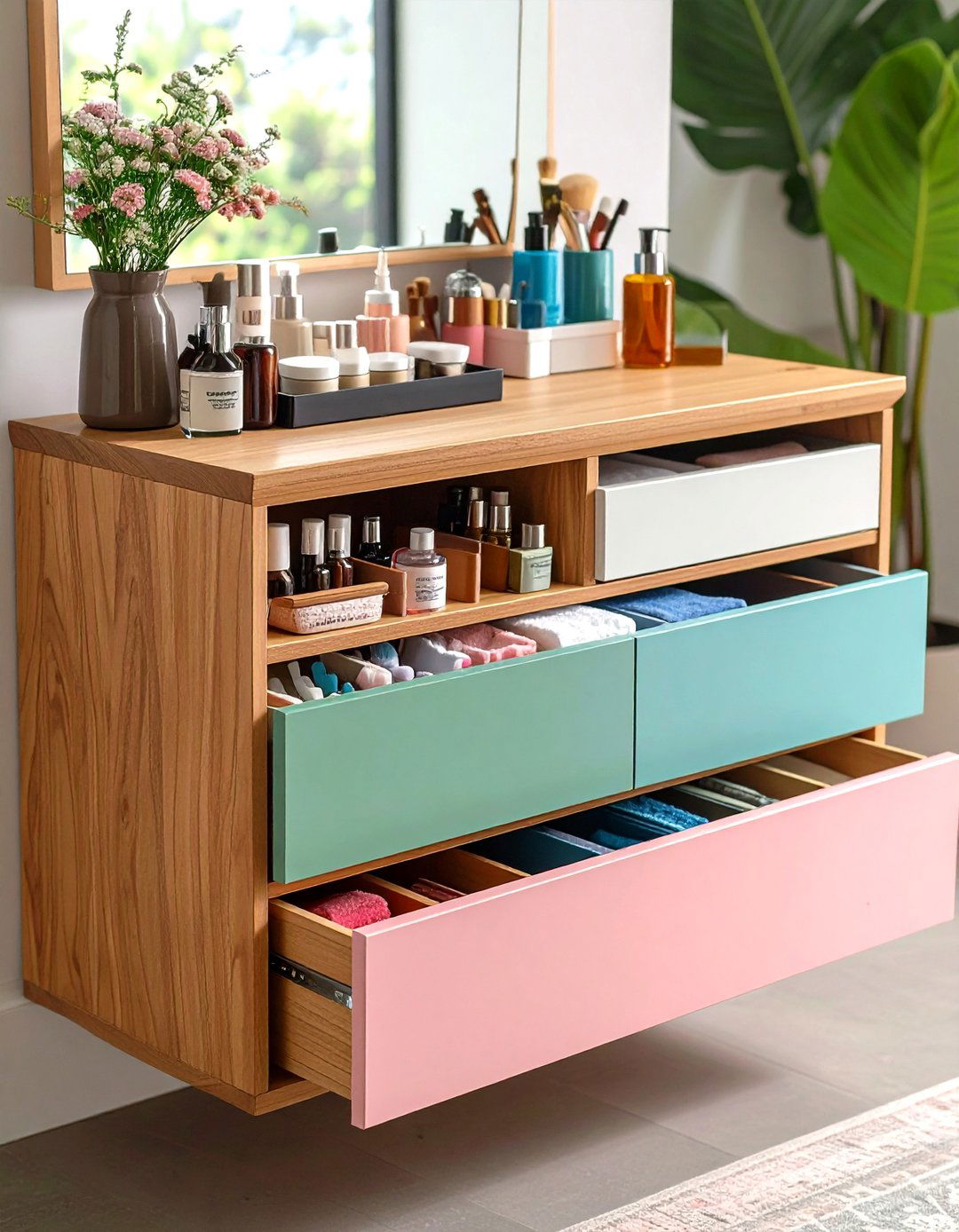
Shallow, full-extension drawers outfitted with adjustable dividers transform a floating vanity into a grooming command center. Experts advise measuring electric tools and tall bottles first, then allocating slots so every staple has a labeled home, slashing morning search time. Because drawers slide in under the countertop, items stay dry and dust-free. Soft-close hardware prevents slamming that could loosen wall anchors, and slim finger grooves keep drawer faces smooth, reinforcing the glide-in-air illusion.
14. Floating Vanity with Hidden Power Outlets Tames Cords
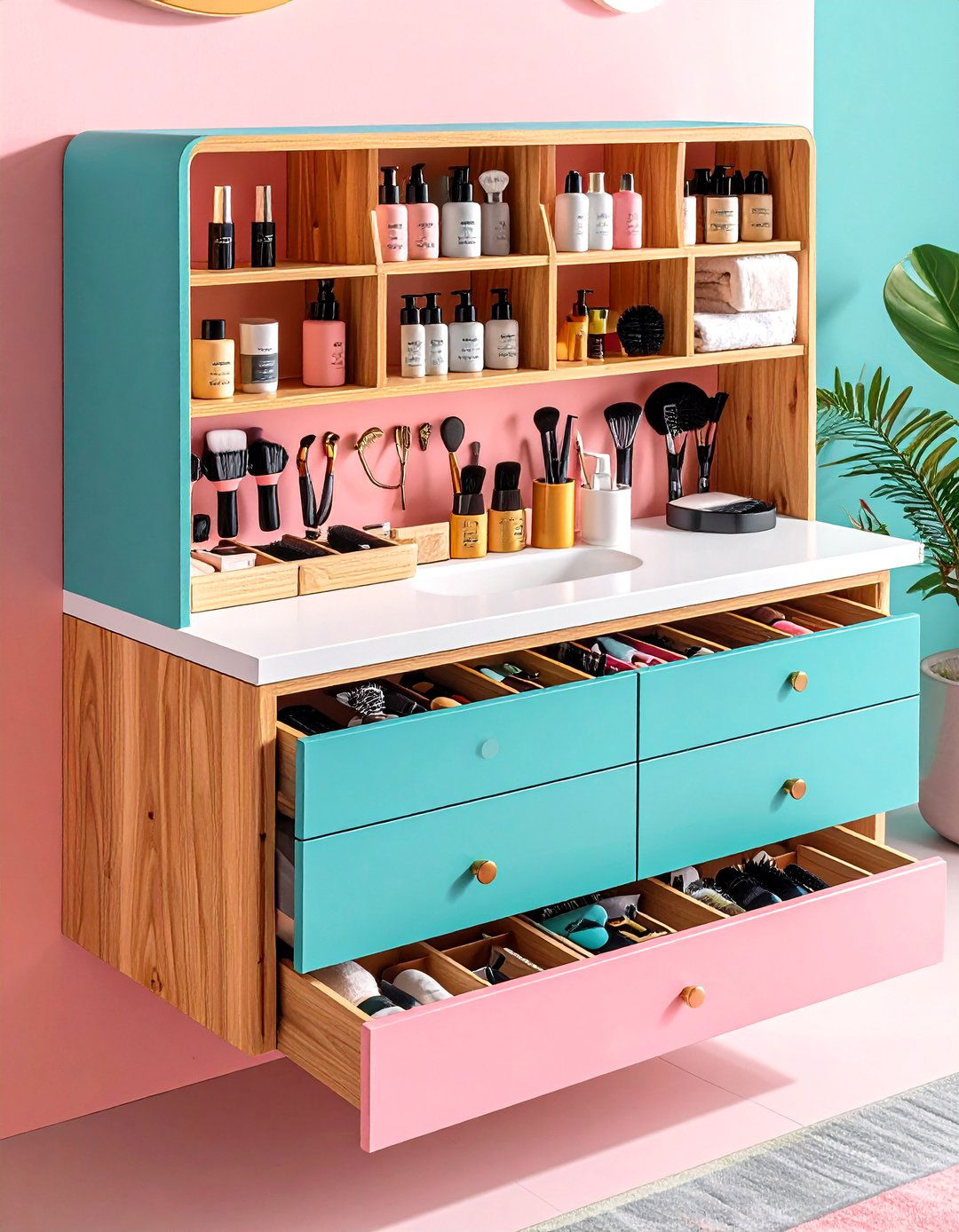
Integrating a UL-listed outlet strip inside a top drawer lets hair tools charge out of sight and removes countertop chaos. Specialized in-drawer outlet kits include GFCI protection and flexible cord breaks so the drawer can open fully without strain. Mount the transformer on the cabinet’s side wall, drill a discrete access hole for the supply line, and finish with a silicone grommet to seal moisture. Label the powered drawer interior to remind guests the socket exists.
15. Glass-Front Floating Vanity Shows Off Serene Order
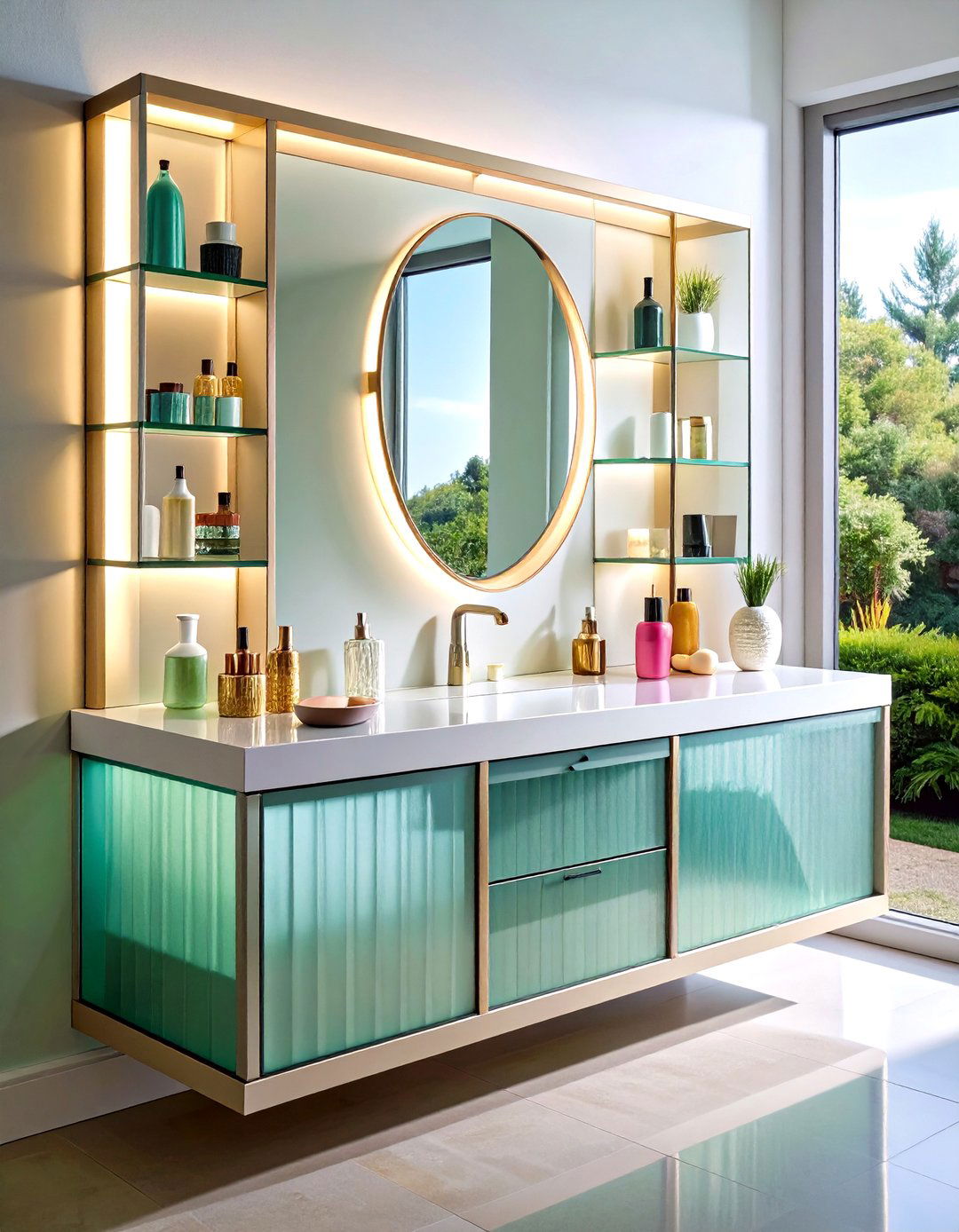
Frosted or ribbed-glass door panels lighten a floating vanity even more, hinting at neatly folded towels within while obscuring visual noise. Tempered glass resists thermal shock and wipes clean with vinegar solution, making it practical as well as pretty. To protect glass edges, cabinetmakers wrap frames in slim aluminum channels coated to match hinges. Interior LED pucks set on motion sensors gently glow when a door opens, doubling as ambient night lighting.
16. Height-Adjustable Floating Vanity Empowers Growing Kids
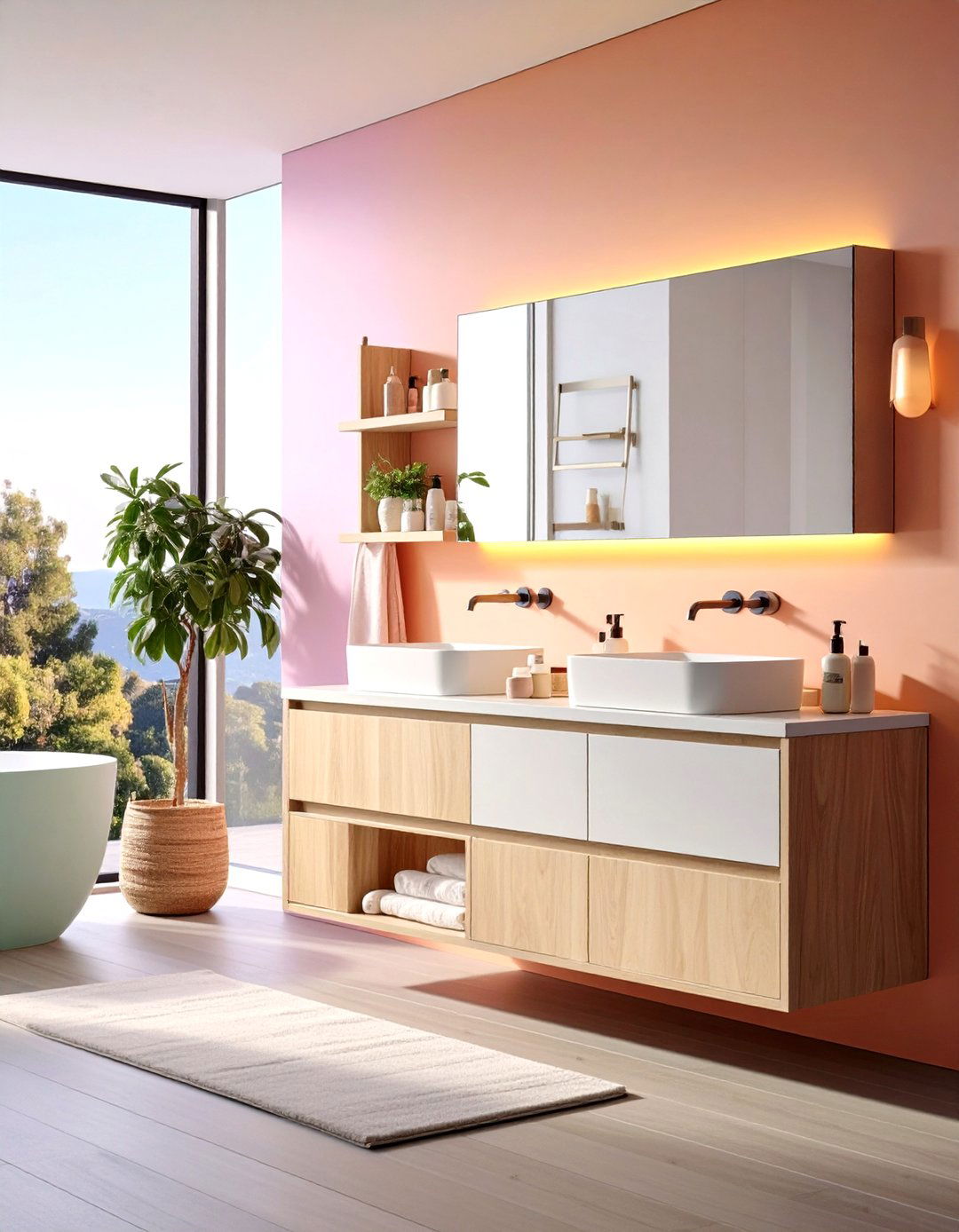
Because a floating vanity’s install height is entirely optional, families can mount the unit a few inches lower in children’s bathrooms without sacrificing adult ergonomics later. Wall brackets and cleats let you re-hang the cabinet higher when the kids outgrow step stools, future-proofing the space. When raising, simply patch the old anchor holes and repaint; plumbing lines remain unchanged thanks to flexible braided hoses that absorb the shift. Choose a durable laminate façade to shrug off crayons and toothpaste splatters during the early years.
17. Floating Vanity with Built-In Hamper Streamlines Laundry
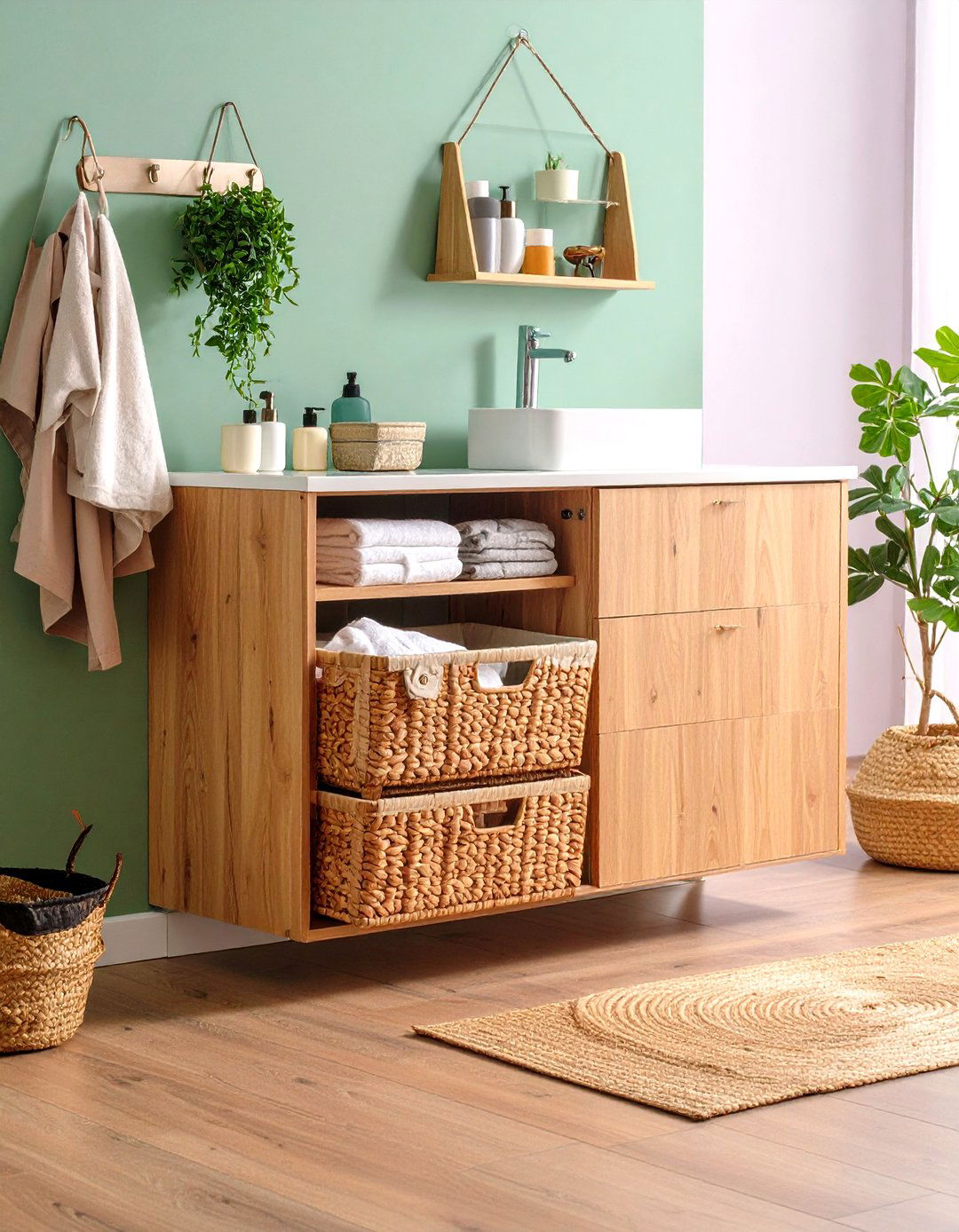
Sliding a tilt-out or pull-out hamper behind the vanity’s central panel keeps dirty linens off the floor and blends functionality into a single footprint. Ventilation slots cut into the door’s side panels encourage airflow, and a removable cloth bag makes weekly washes a cinch. Position the hamper closest to the bathroom doorway so family members drop clothes before showering, minimizing post-bath drips on tile.
18. Smart-Mirror Floating Vanity Adds High-Tech Convenience
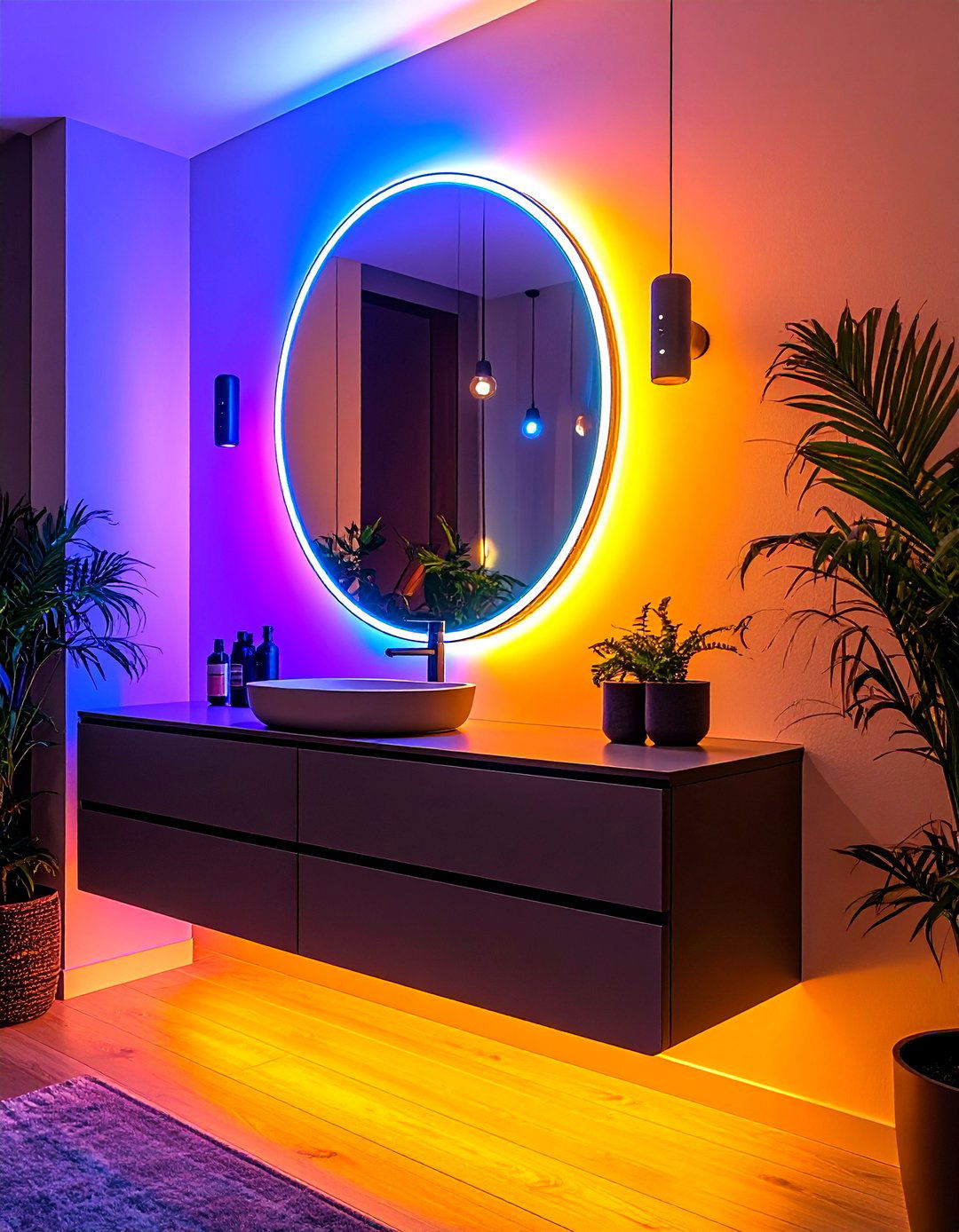
Pairing a floating vanity with a touch-control smart mirror delivers defogging, integrated lighting, and even voice-assistant updates during morning routines. The mirror’s power supply hides within the same wall bay that supports the vanity’s cleat, so cables stay invisible. Users can toggle color temperature for makeup tasks, monitor weather readouts, and queue podcasts without reaching for their phone, all while countertop clutter remains minimal.
19. Eco-Friendly Bamboo Floating Vanity Champions Sustainability
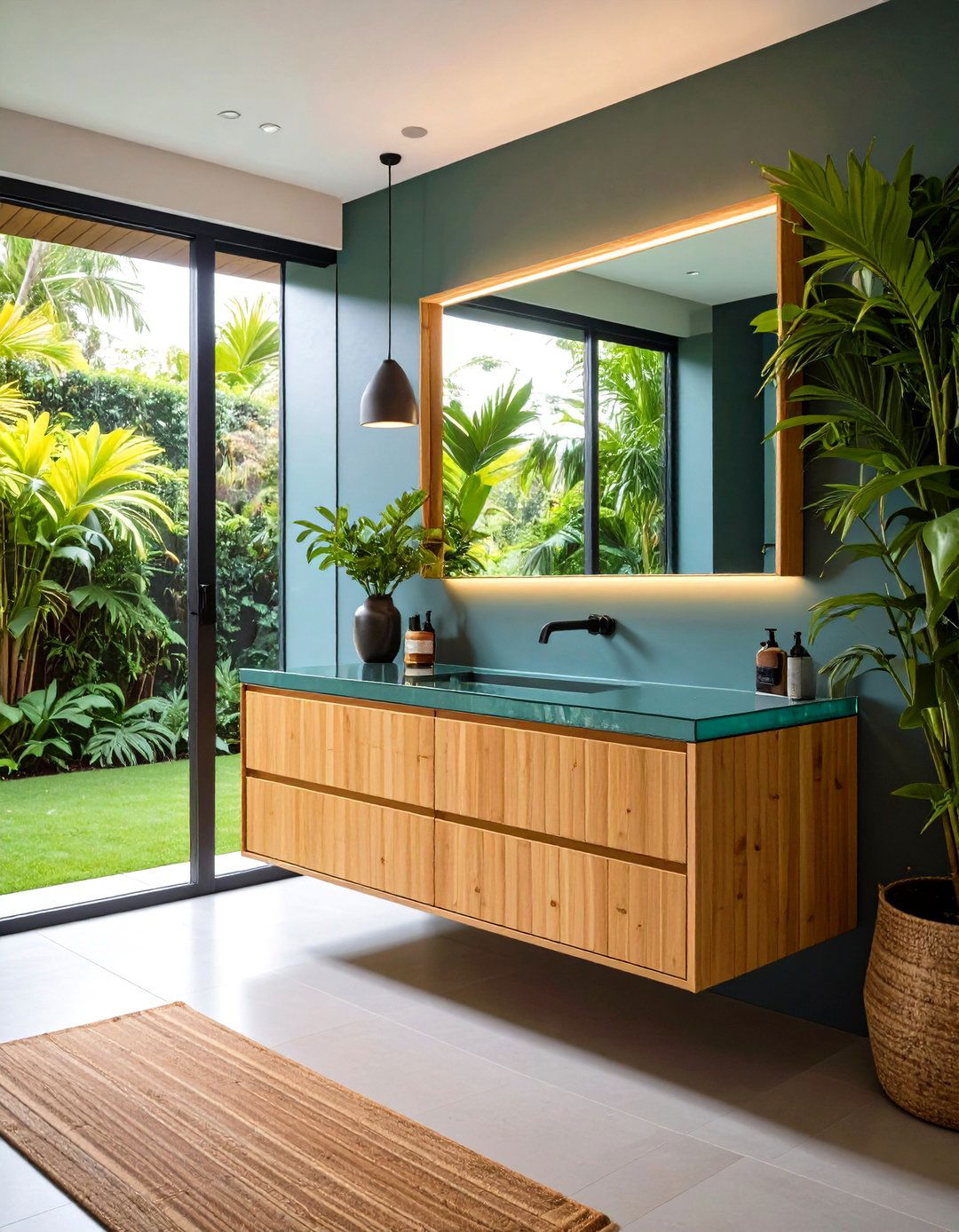
Fast-growing bamboo offers a renewable alternative to hardwood and handles humidity well when strand-woven into cabinetry panels. Manufacturers bind bamboo fibers with low-VOC adhesives, then UV-cure finishes for moisture resistance. A floating install reduces the amount of material needed for legs or toe-kicks, and any off-cut scraps compost more readily than plywood. Complement the vanity with recycled-glass counters to push the eco message further.
20. Bold-Color Floating Vanity Energizes the Powder Room
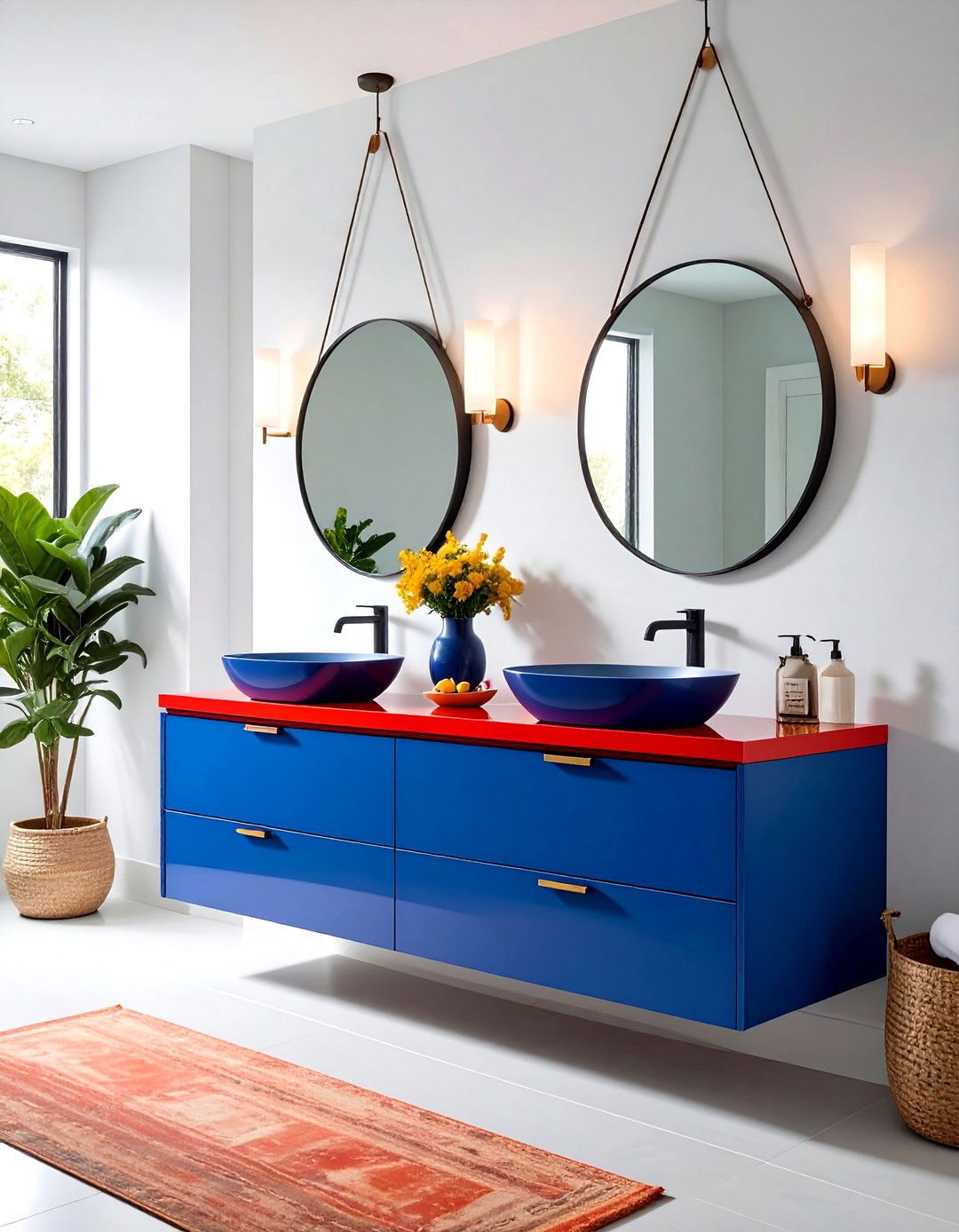
A powder room is prime real estate for risk-taking, and painting a floating vanity in paprika, sage, or indigo delivers memorable personality without overwhelming a small footprint. Because the cabinet floats, the vivid hue appears almost like a wall-mounted artwork, especially when a neutral basin and faucet balance the palette. Seal the finish with a satin waterborne enamel that resists chipping yet retains a soft glow under sconces.
Conclusion:
Floating vanities excel because they mix visual lightness with serious storage, adapt to any room size, and invite creative flourishes such as LEDs, smart tech, or eco-friendly materials. By tailoring mounting height, finishes, and add-ons—from hidden power to integrated hampers—you craft a bathroom centerpiece that feels custom-built for both your style and daily rituals, while freeing precious floor space for easy maintenance and an unmistakably modern vibe.


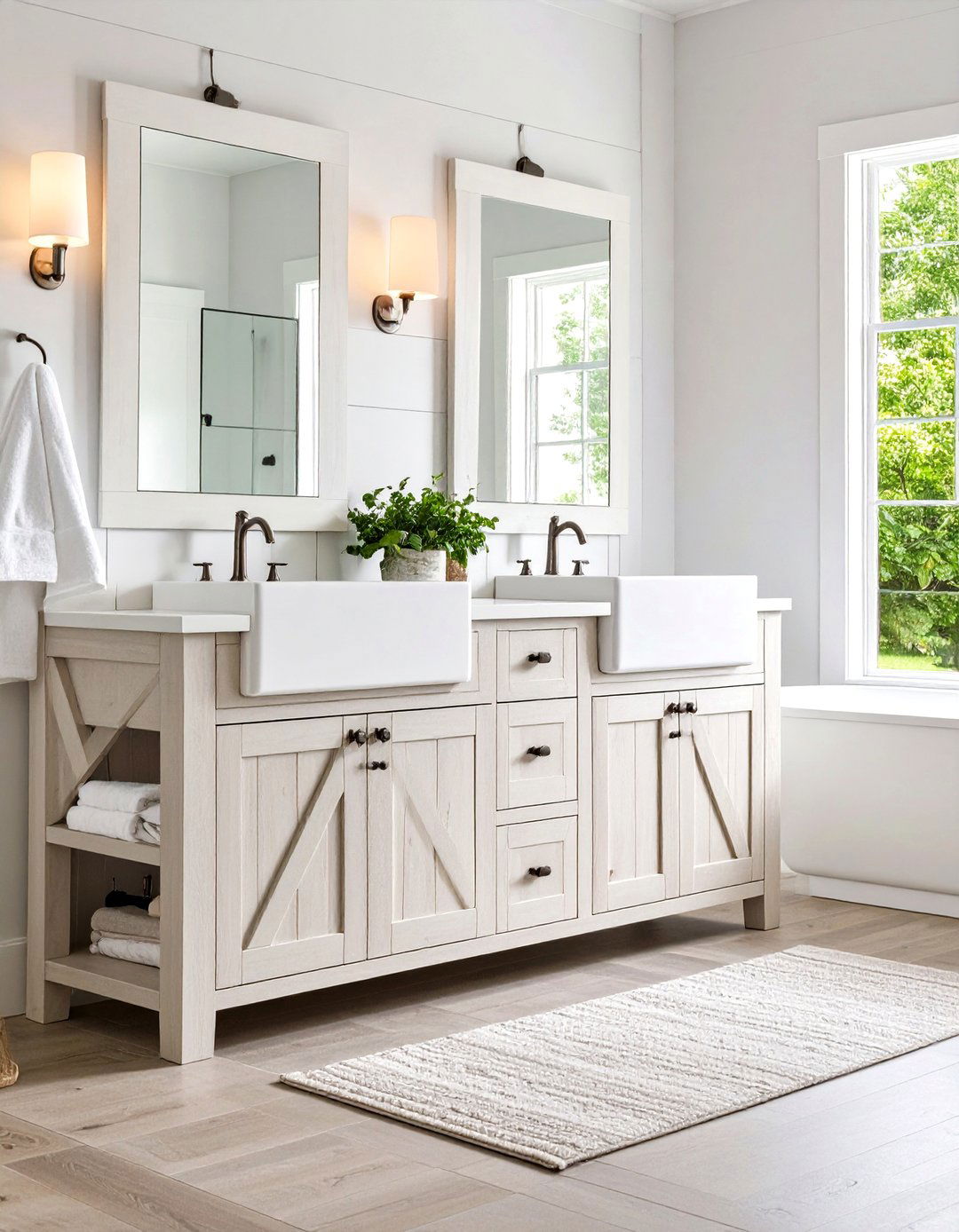
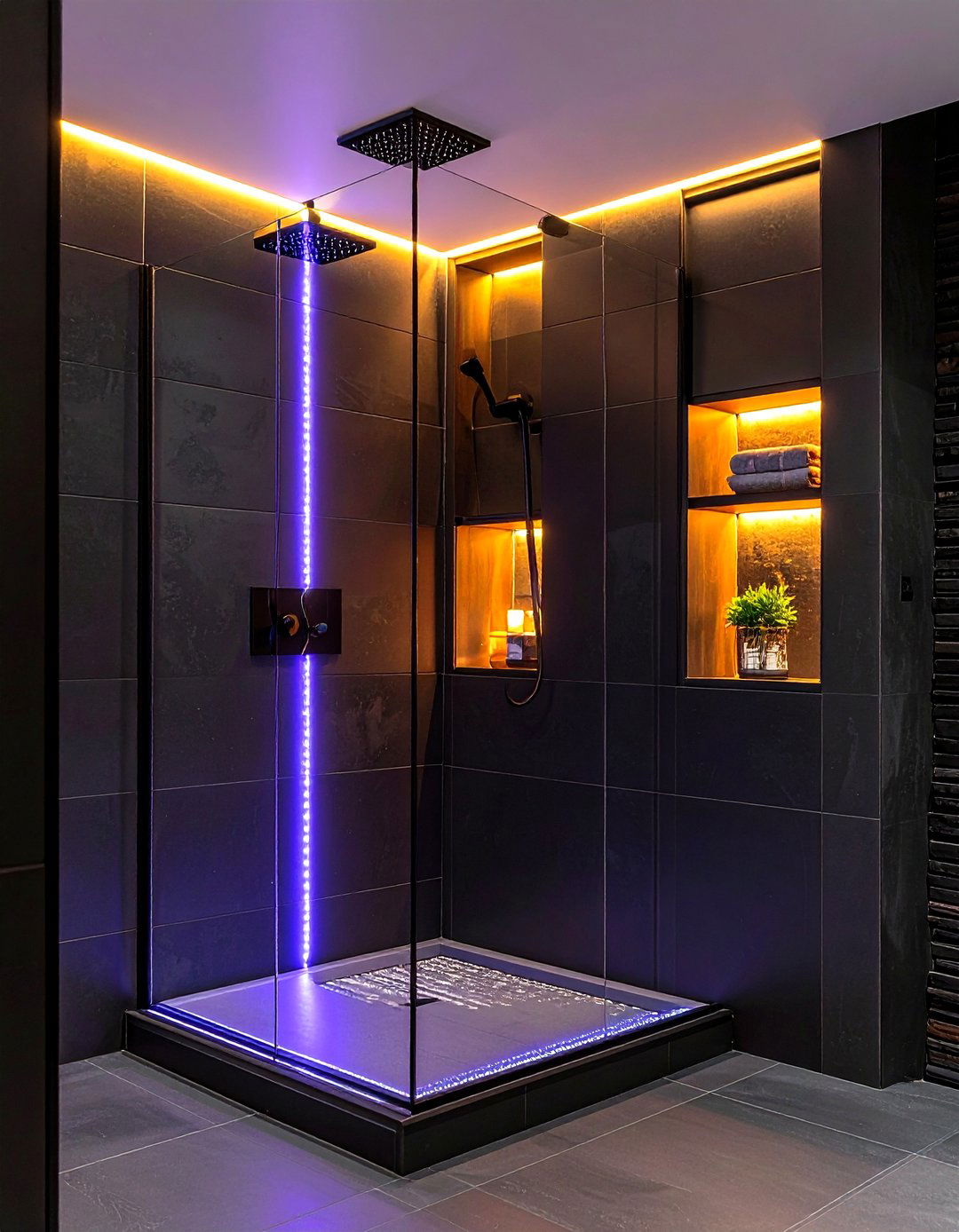
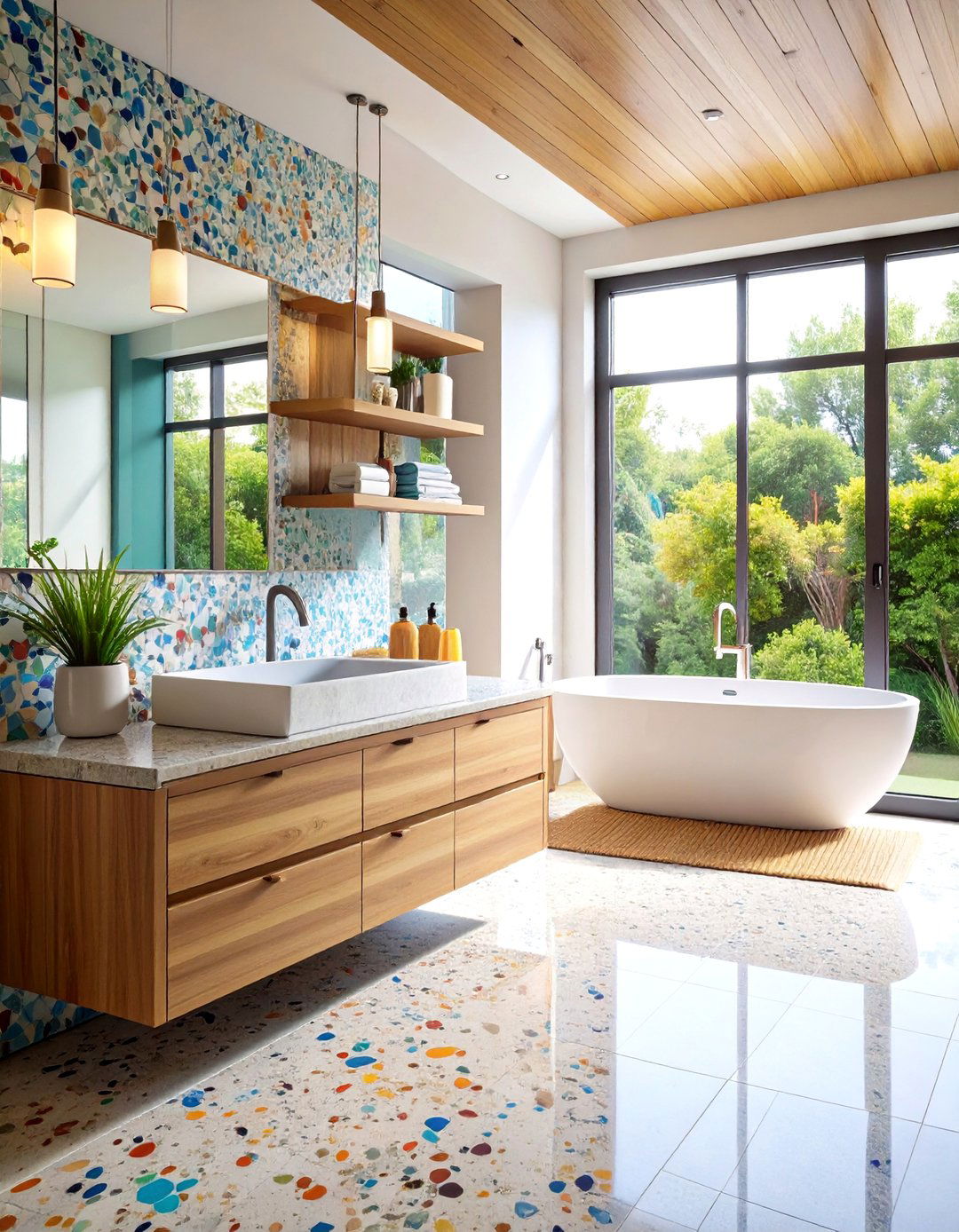
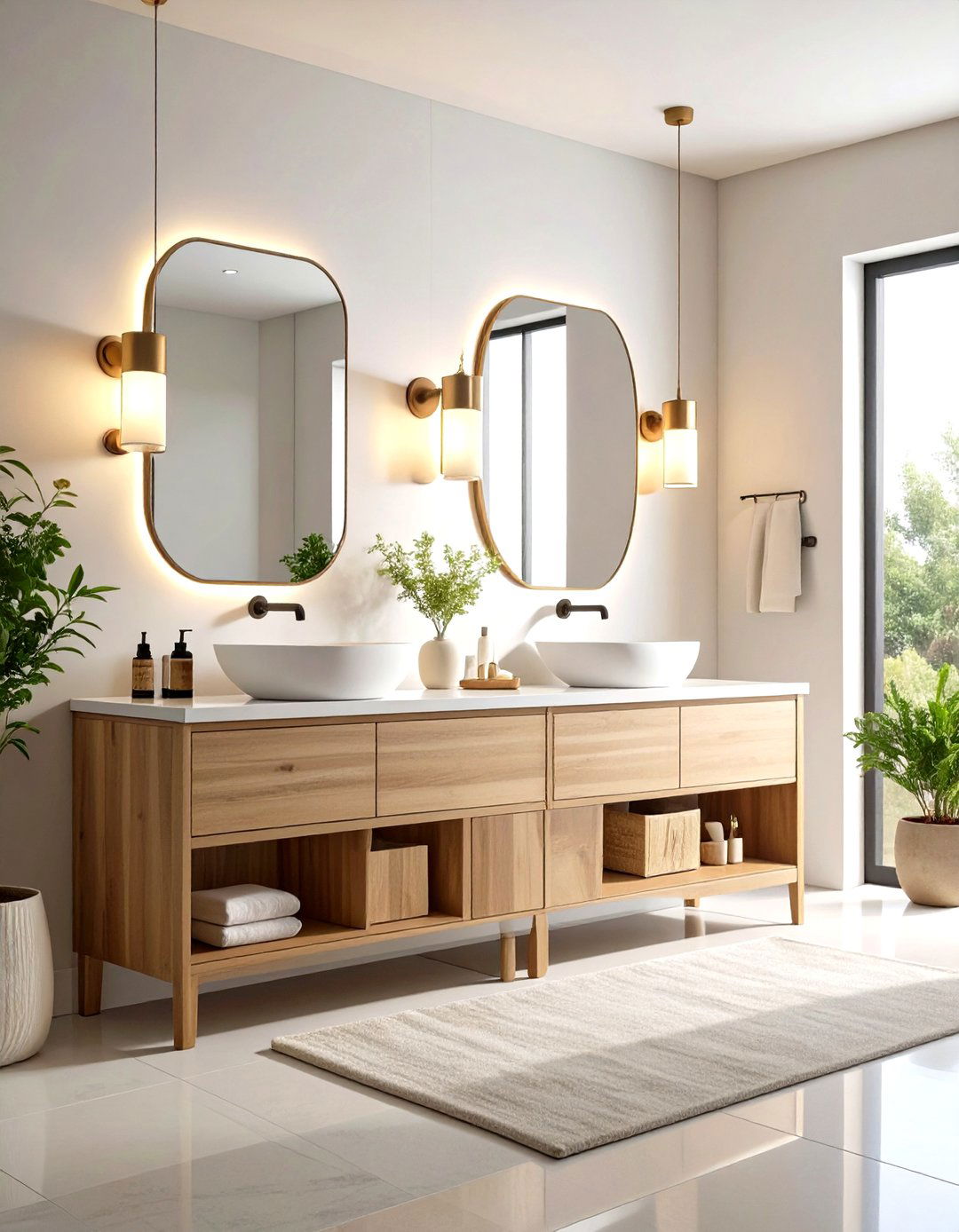
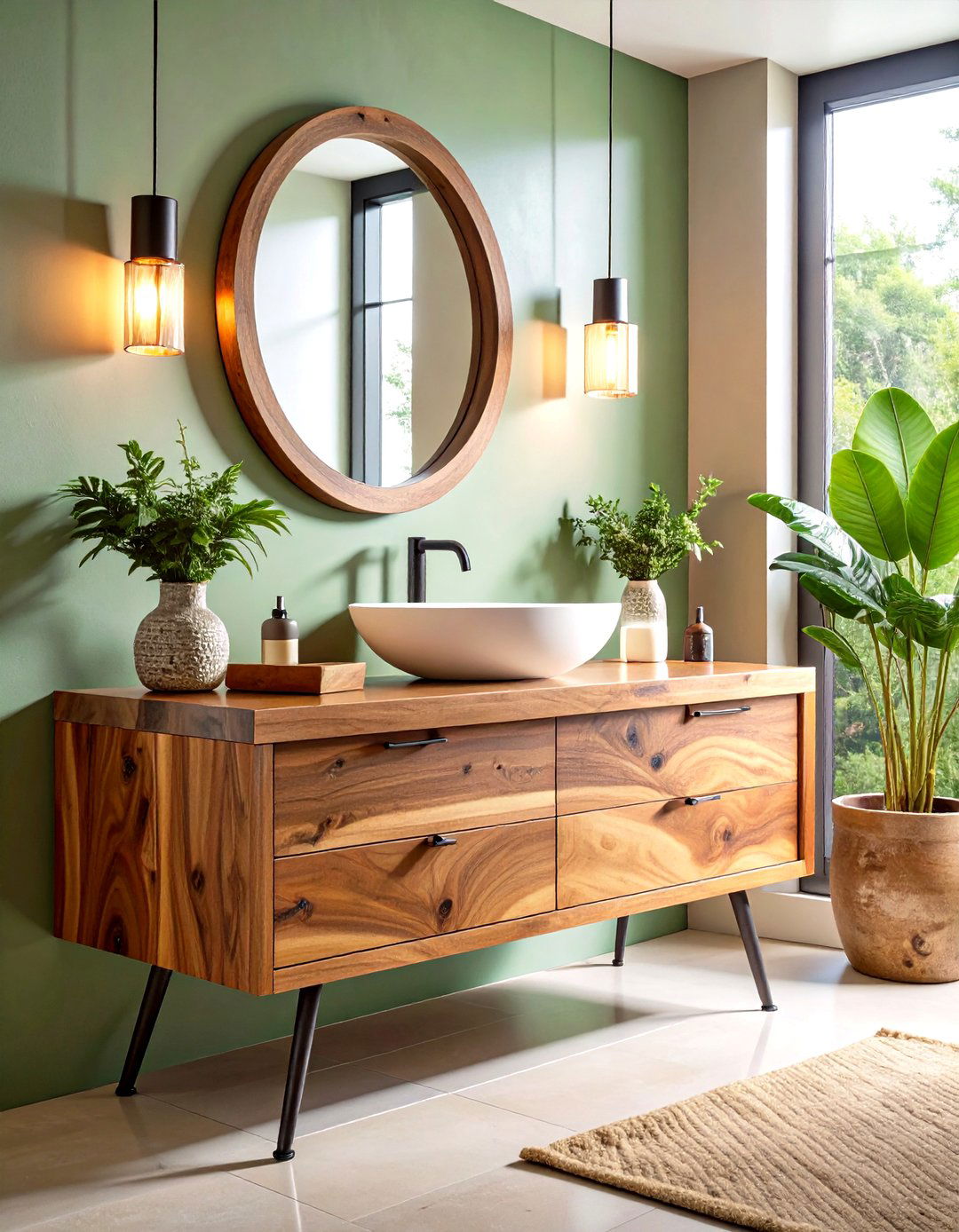

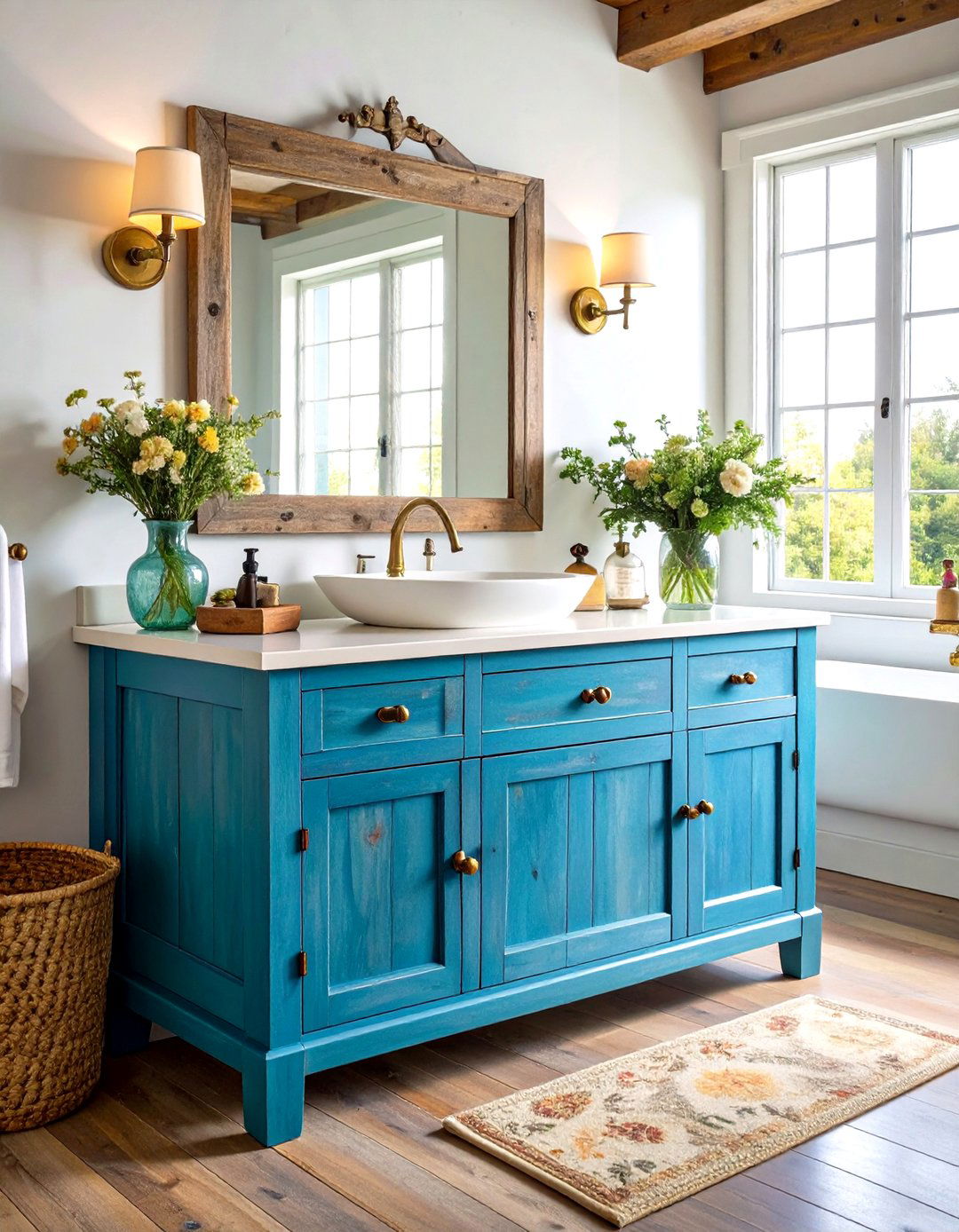
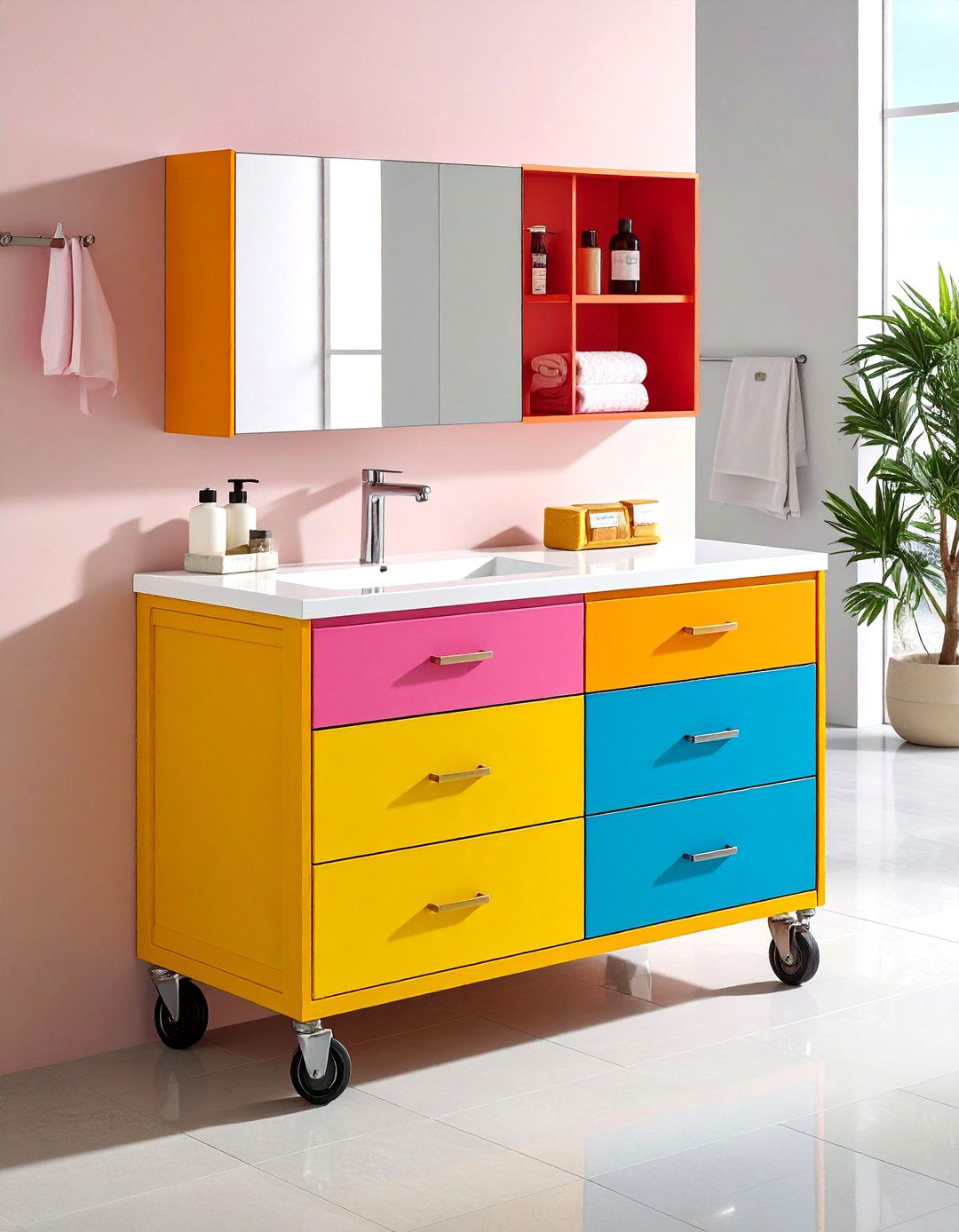
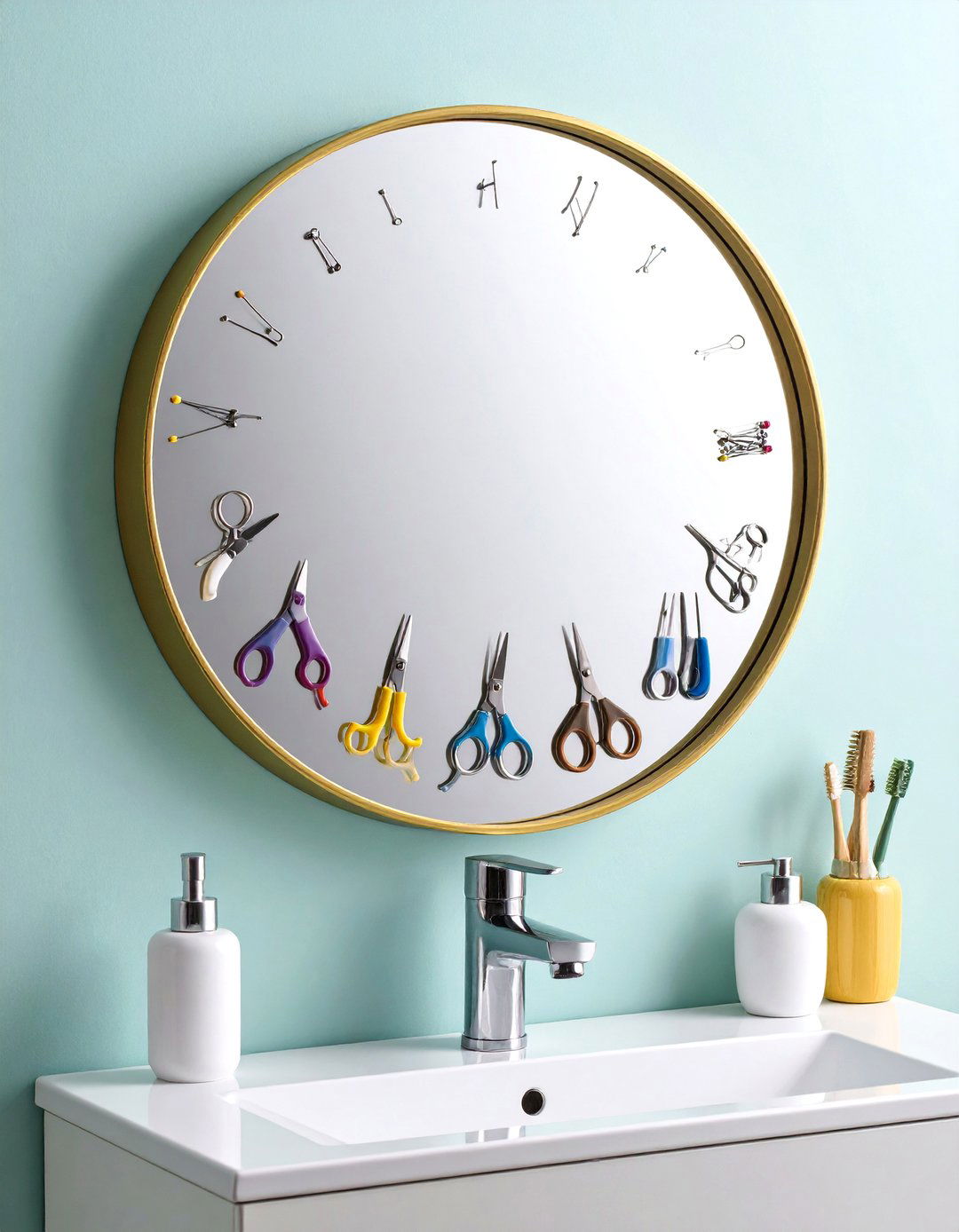

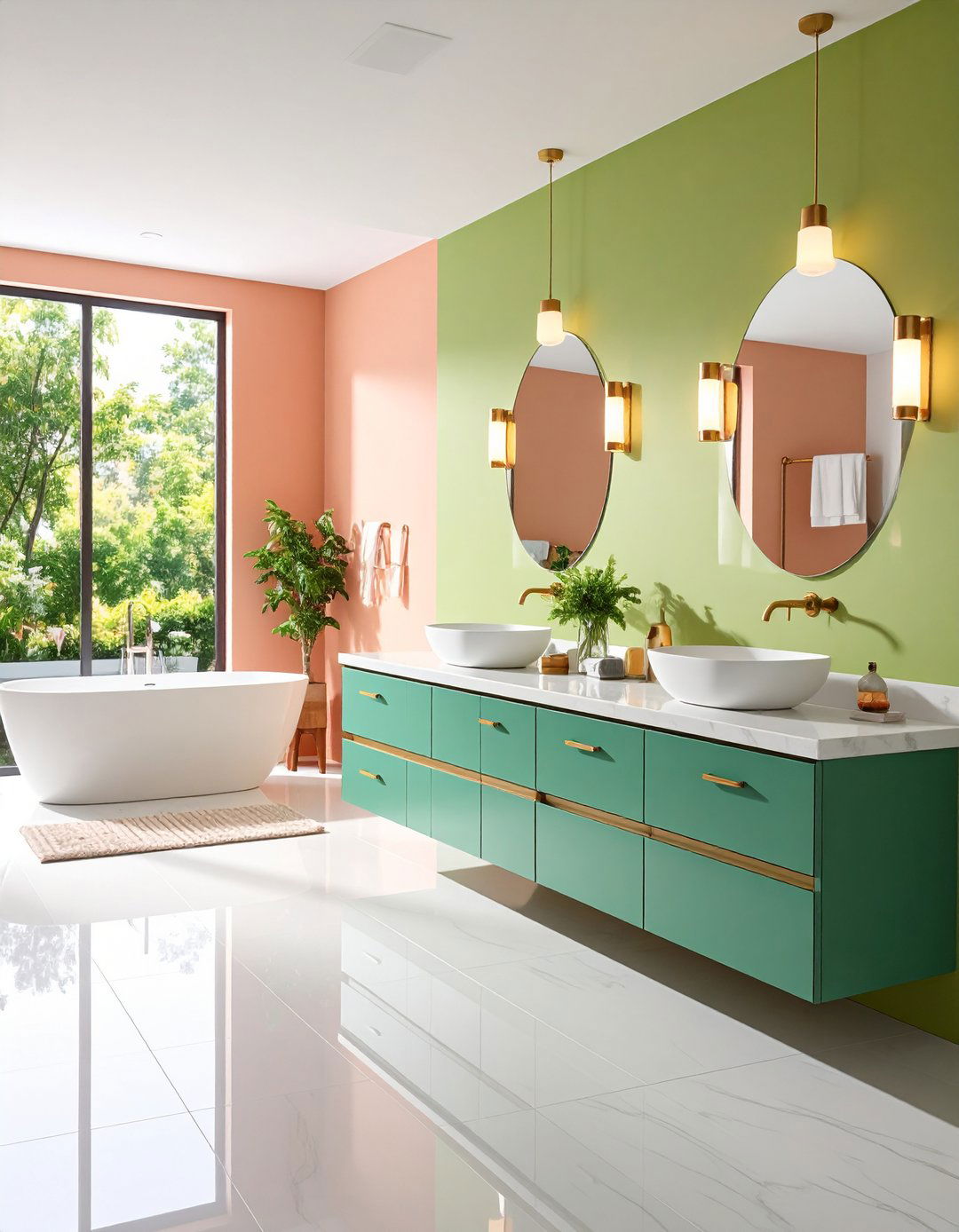
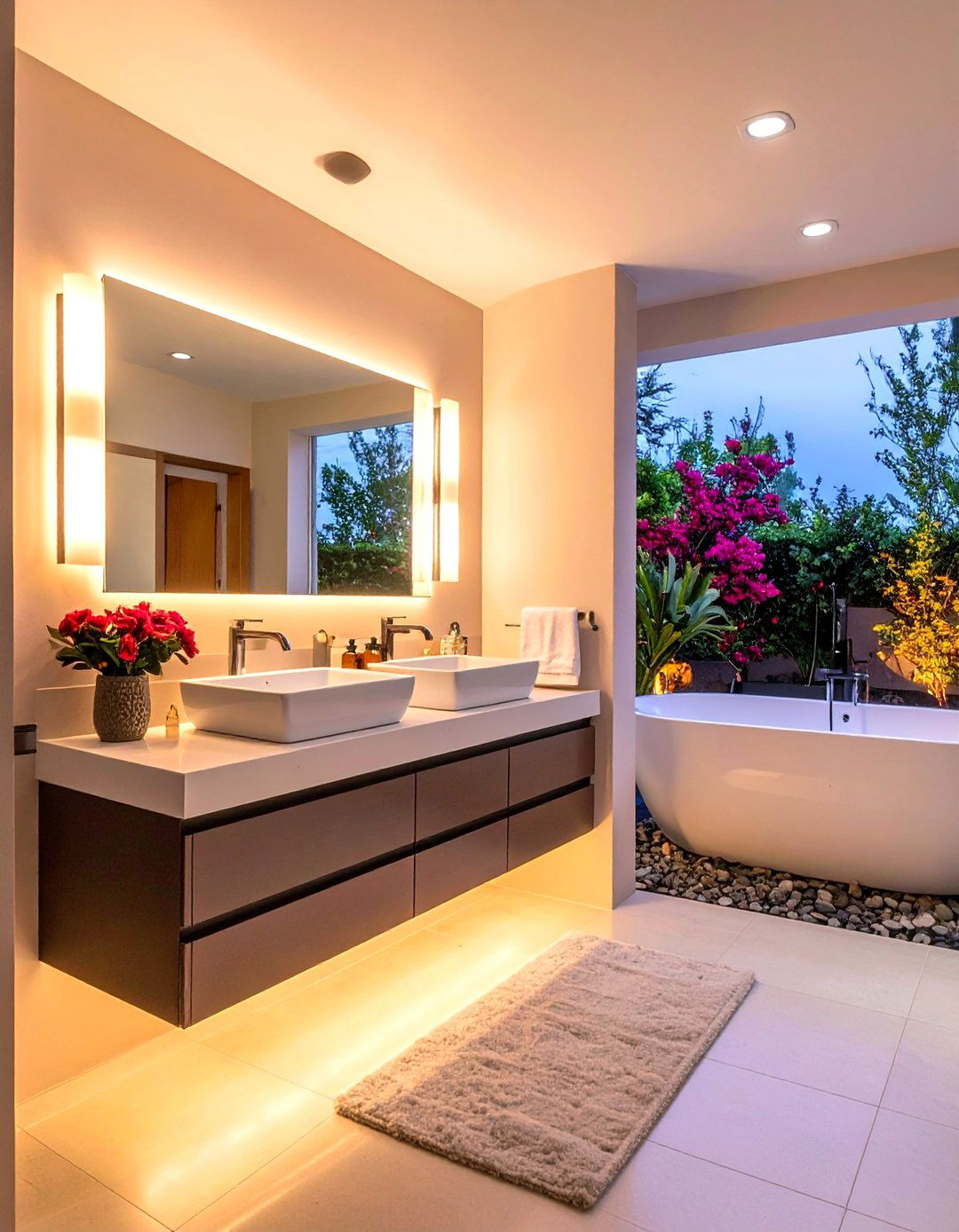
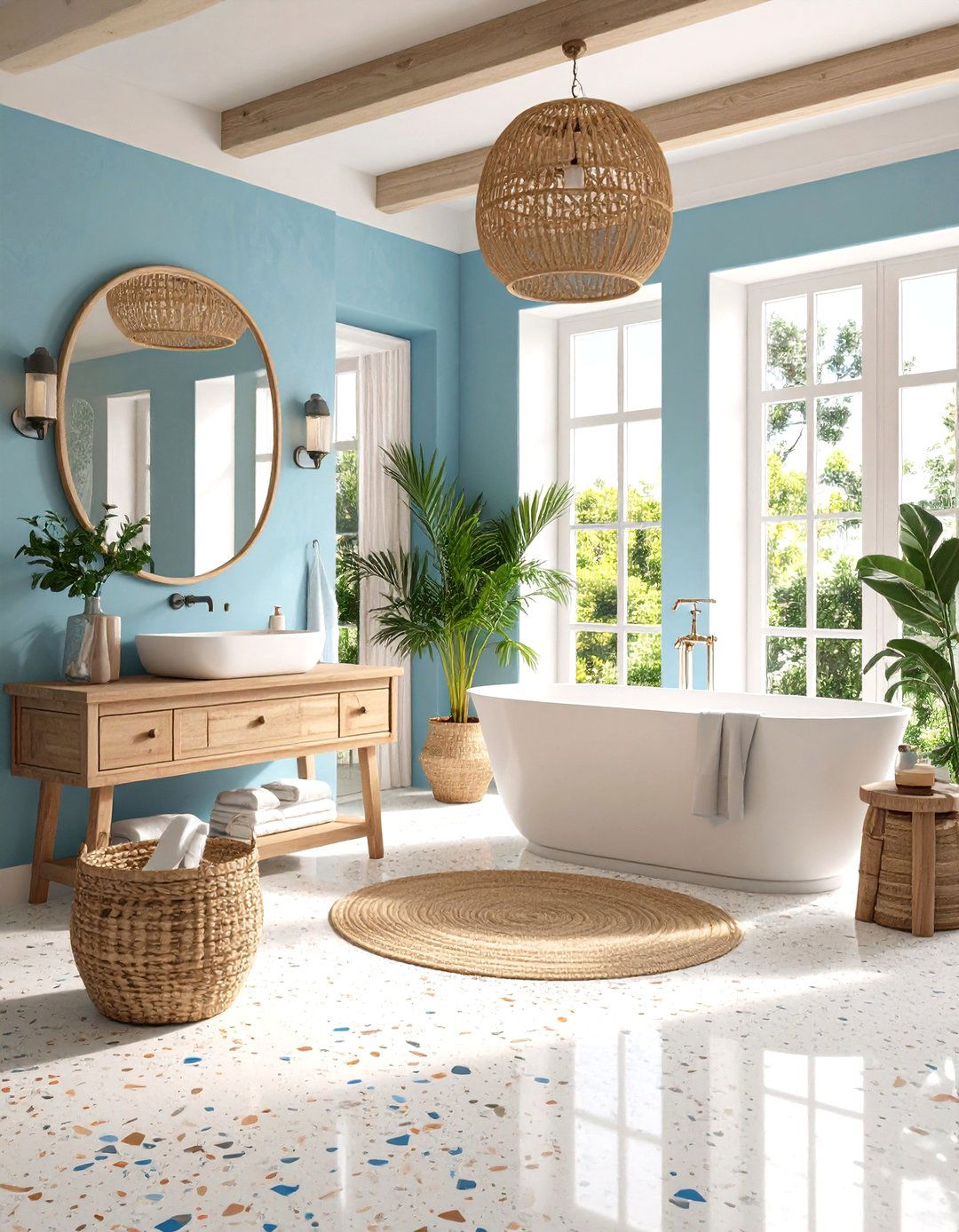
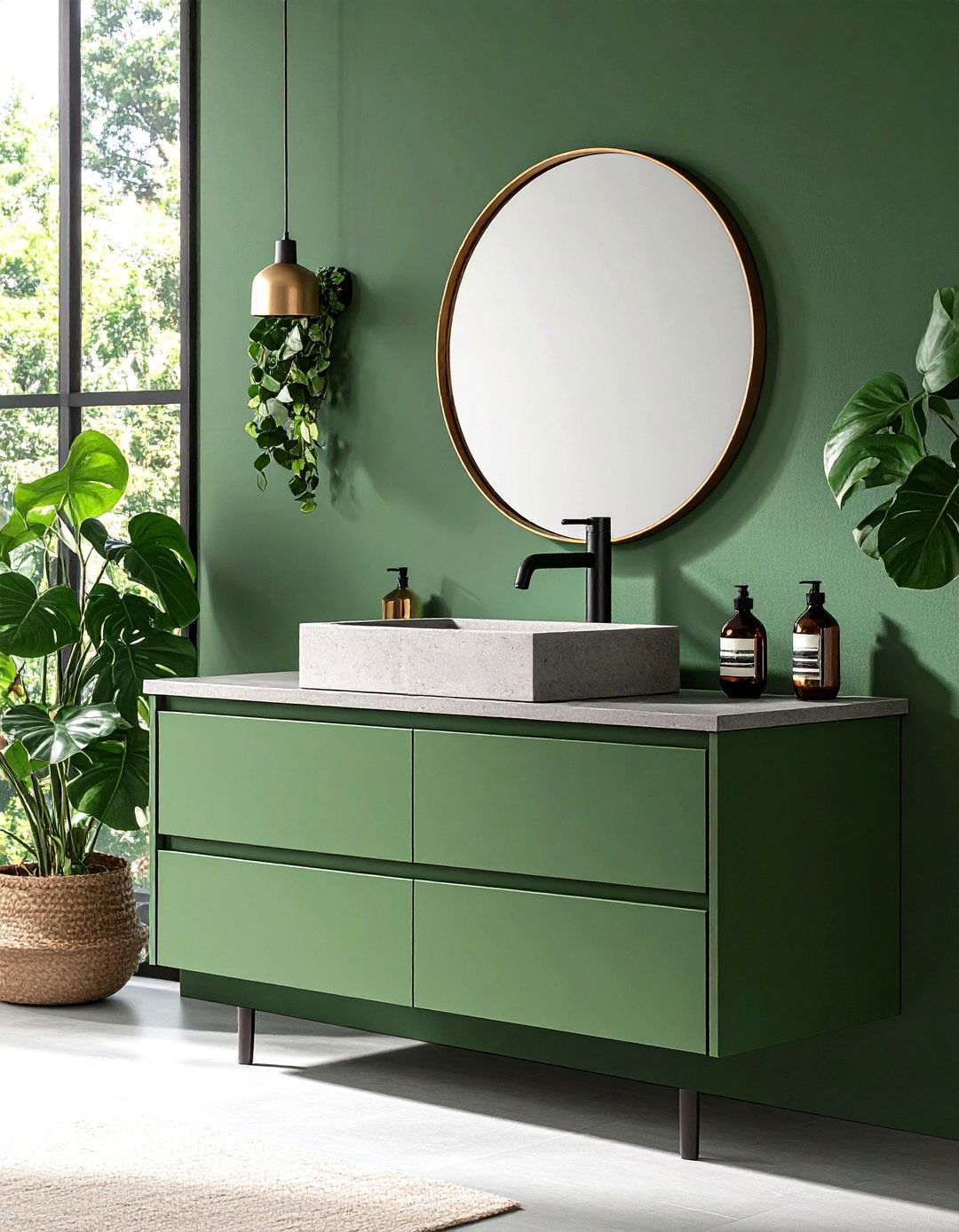
Leave a Reply